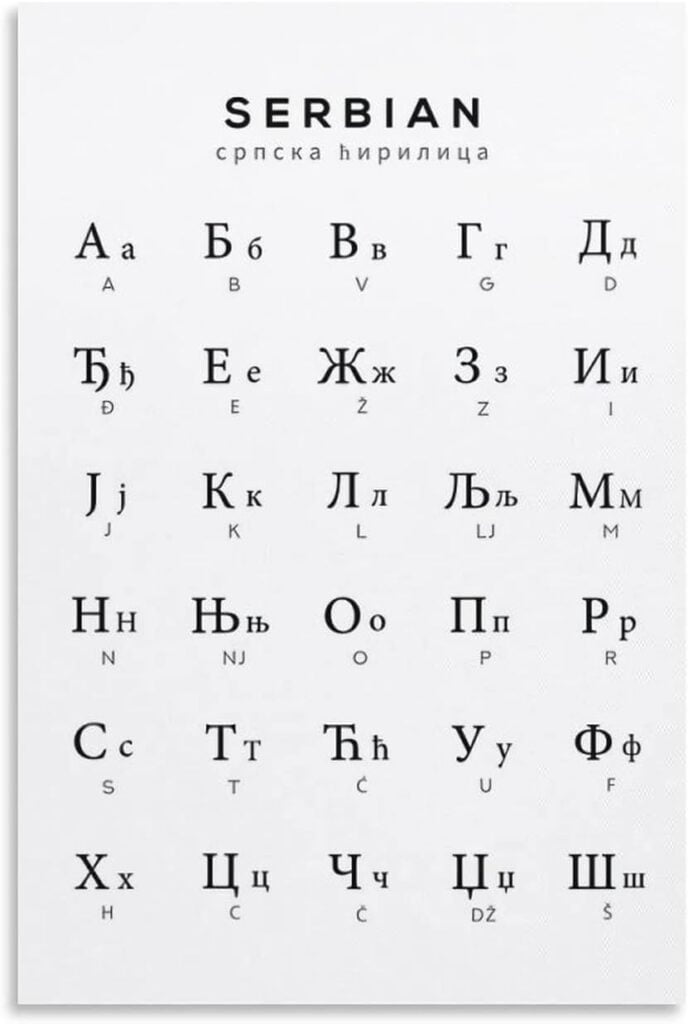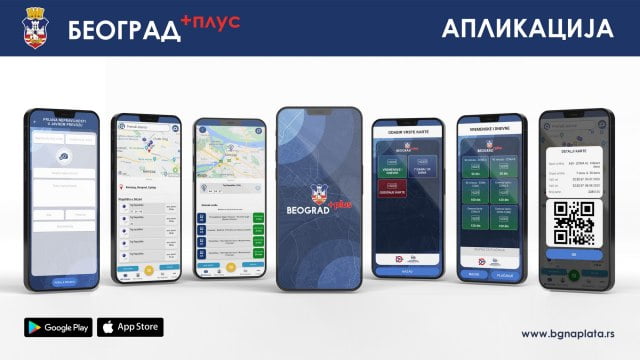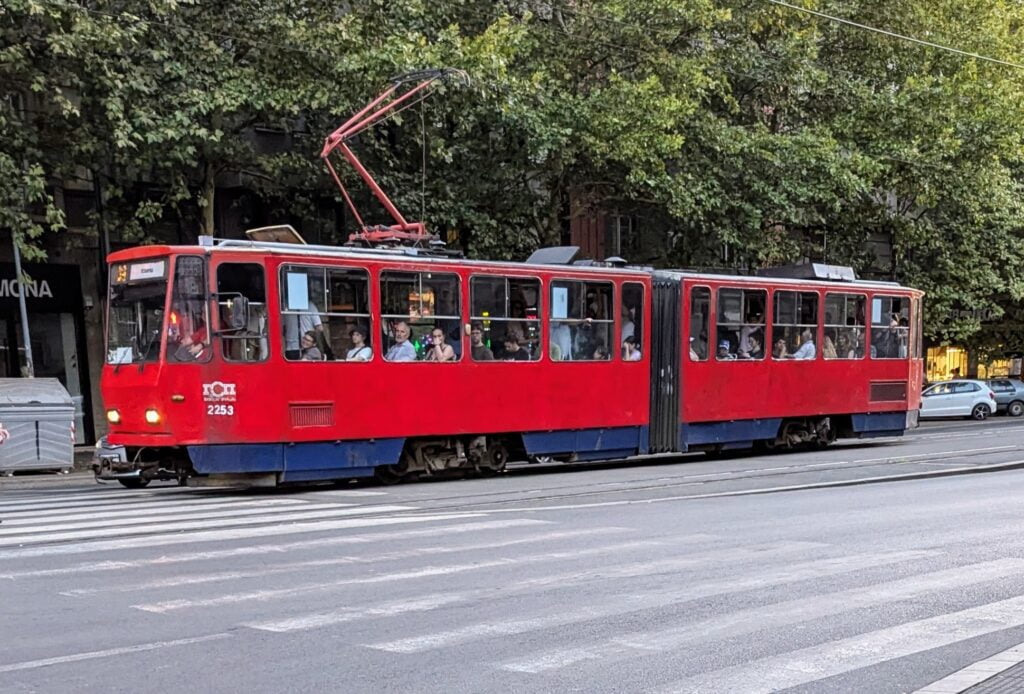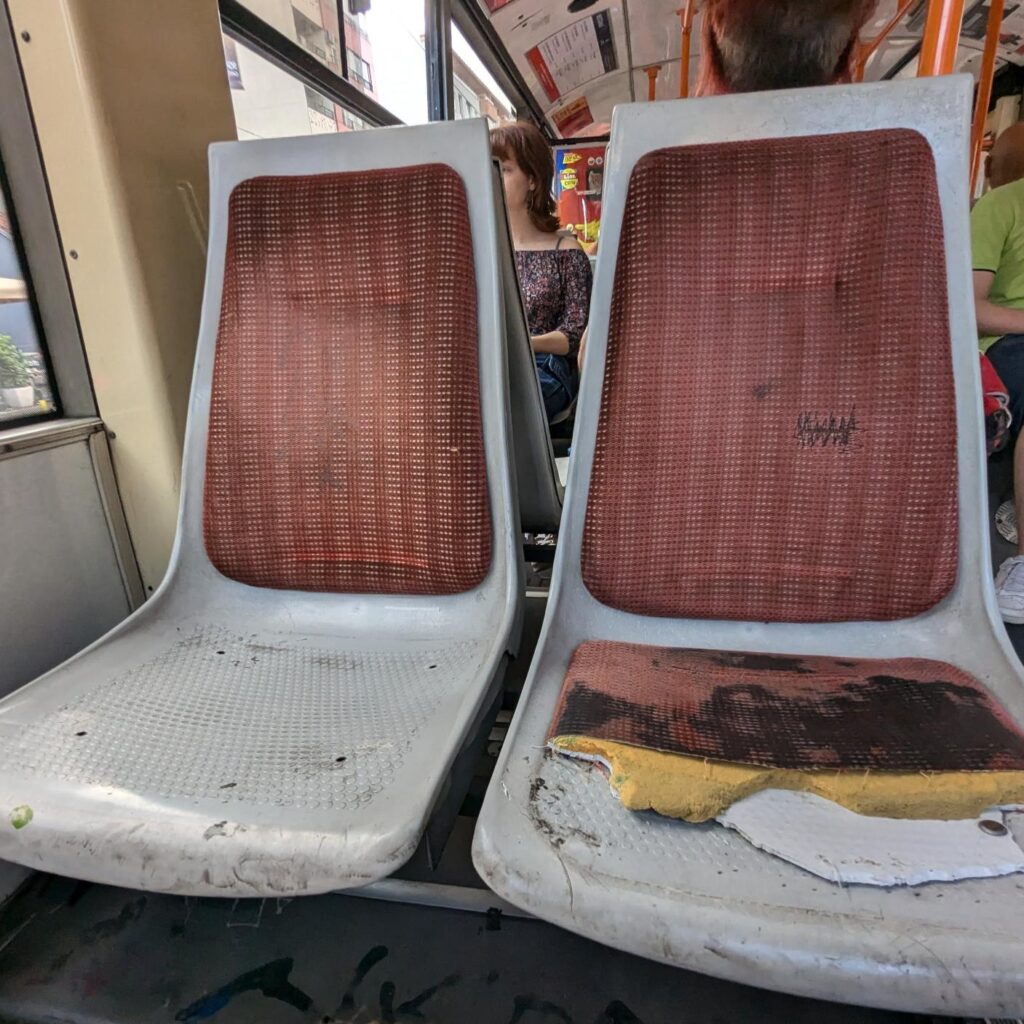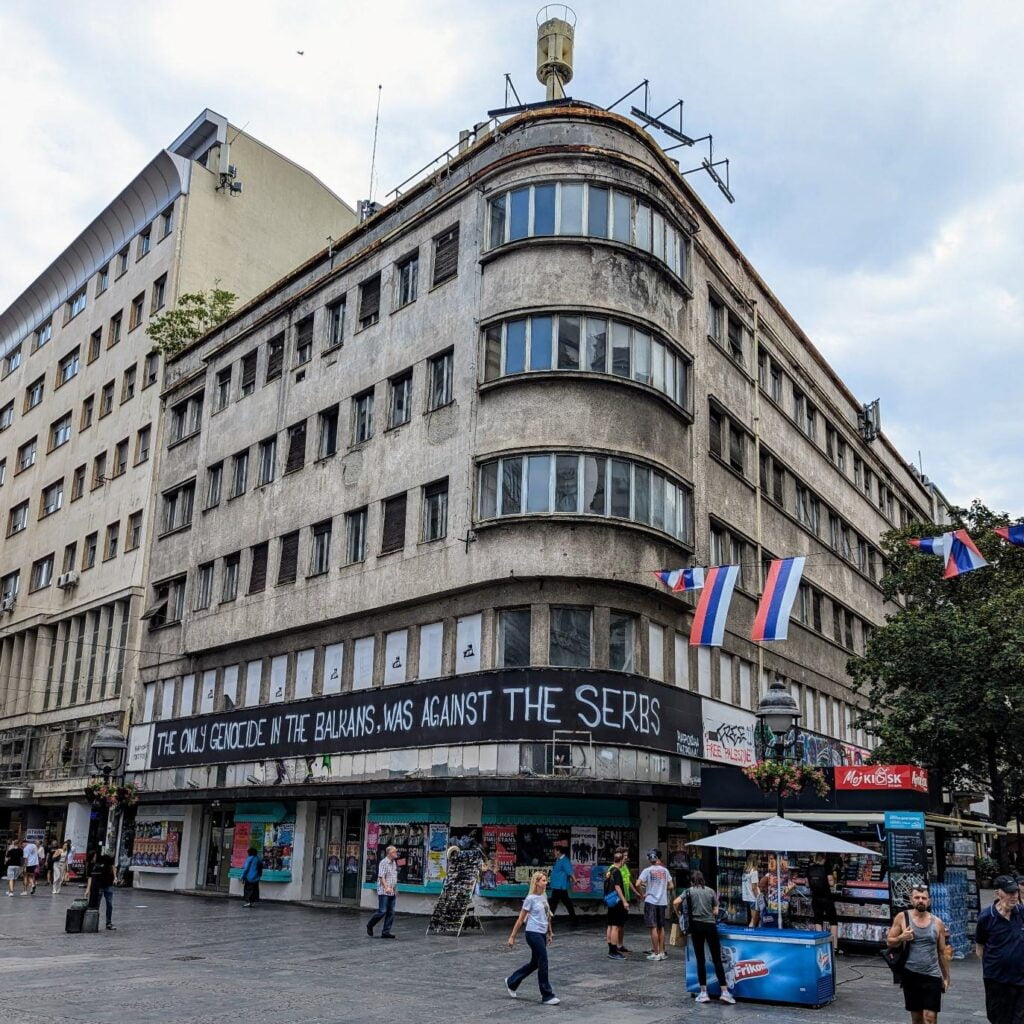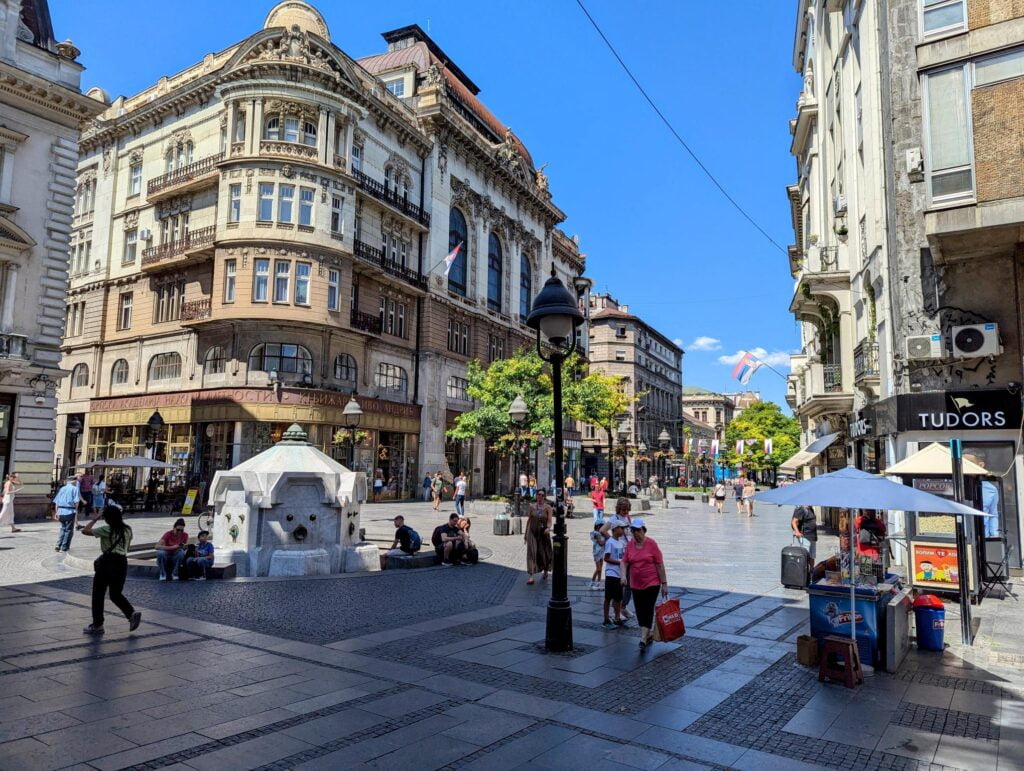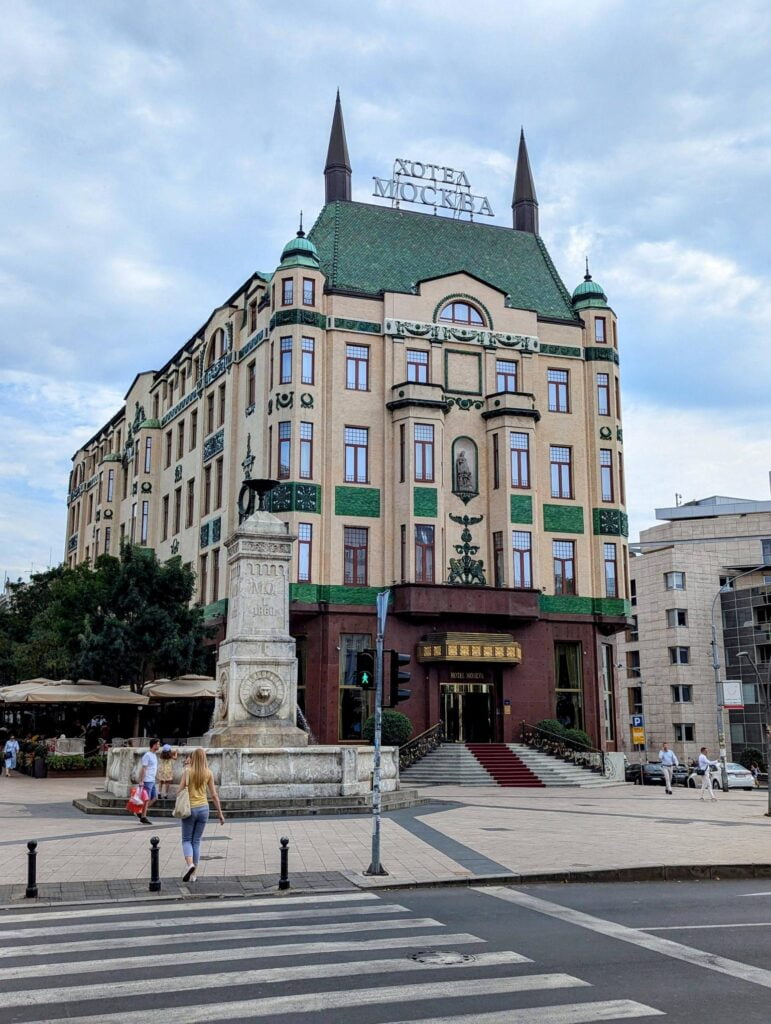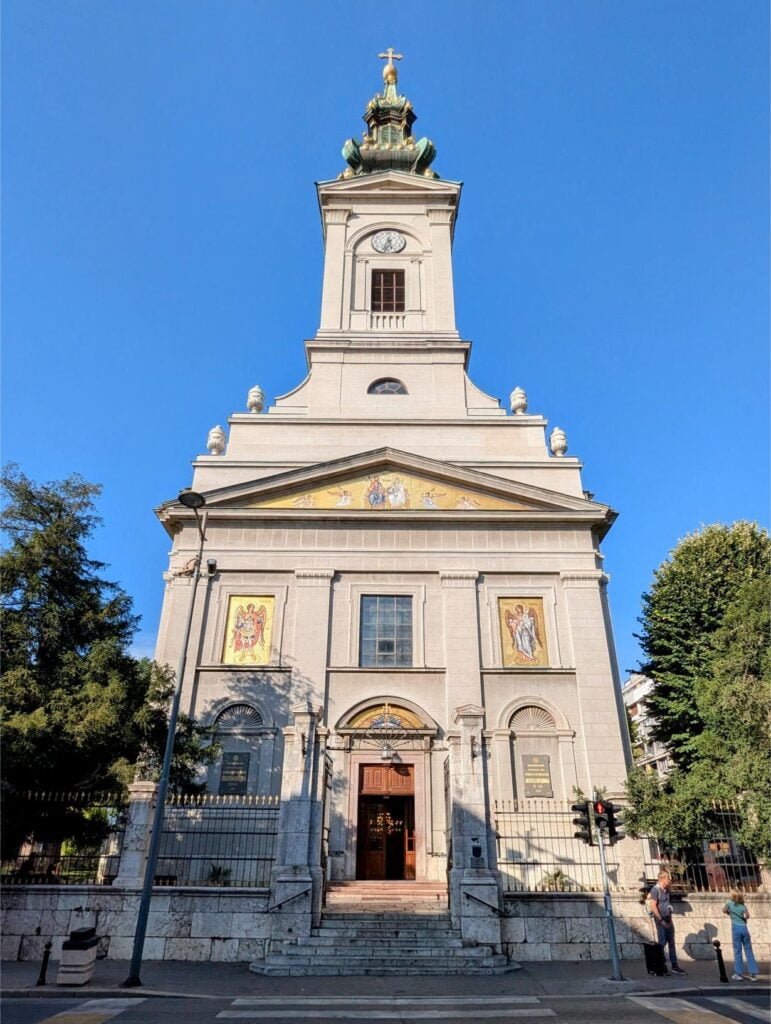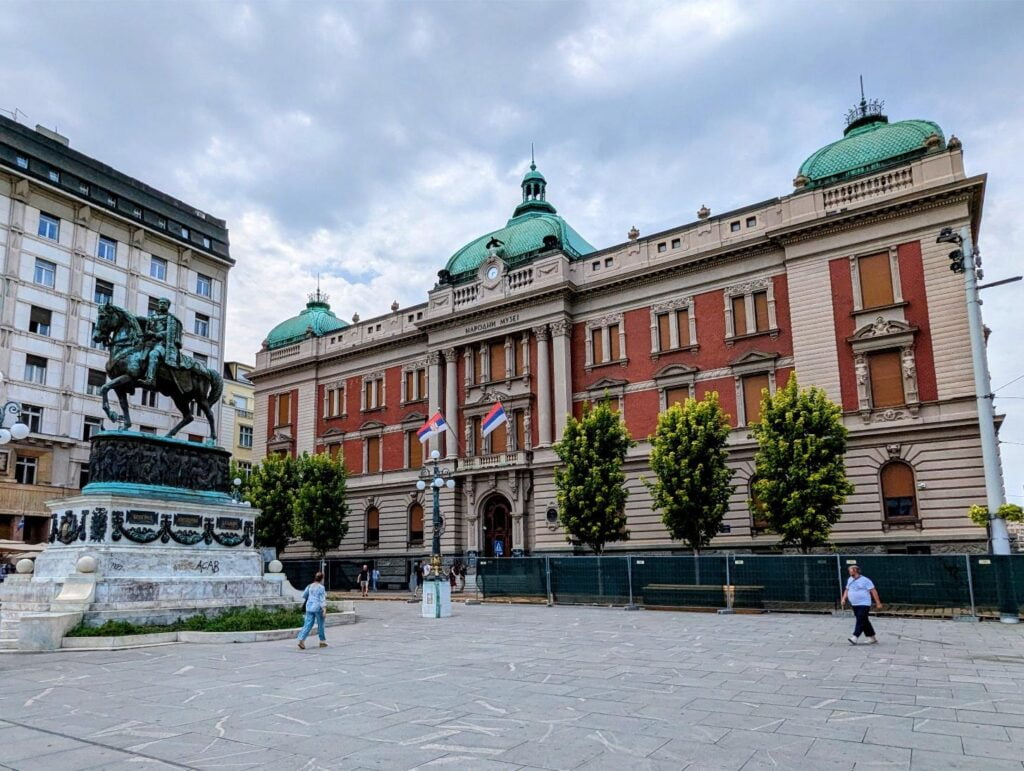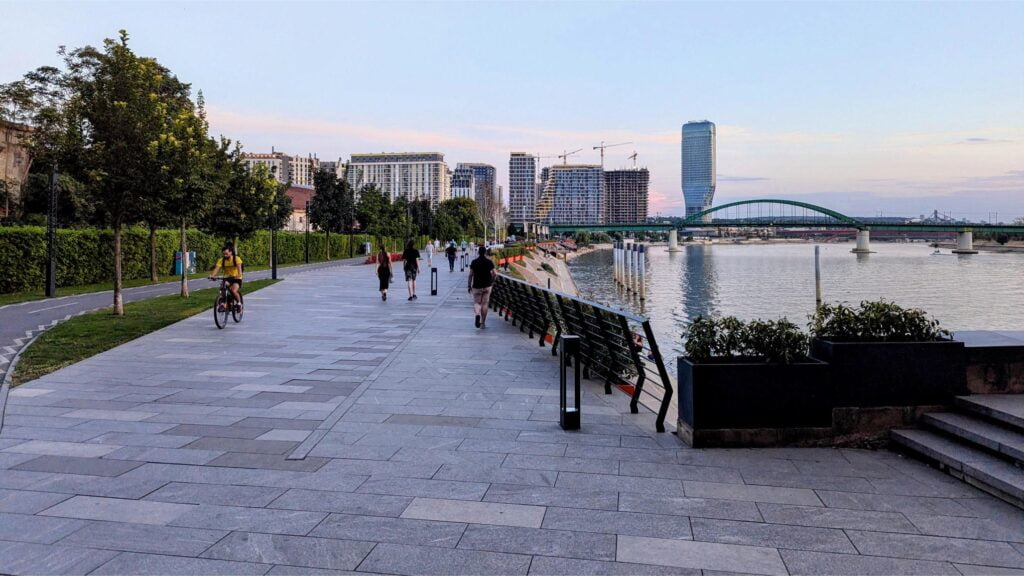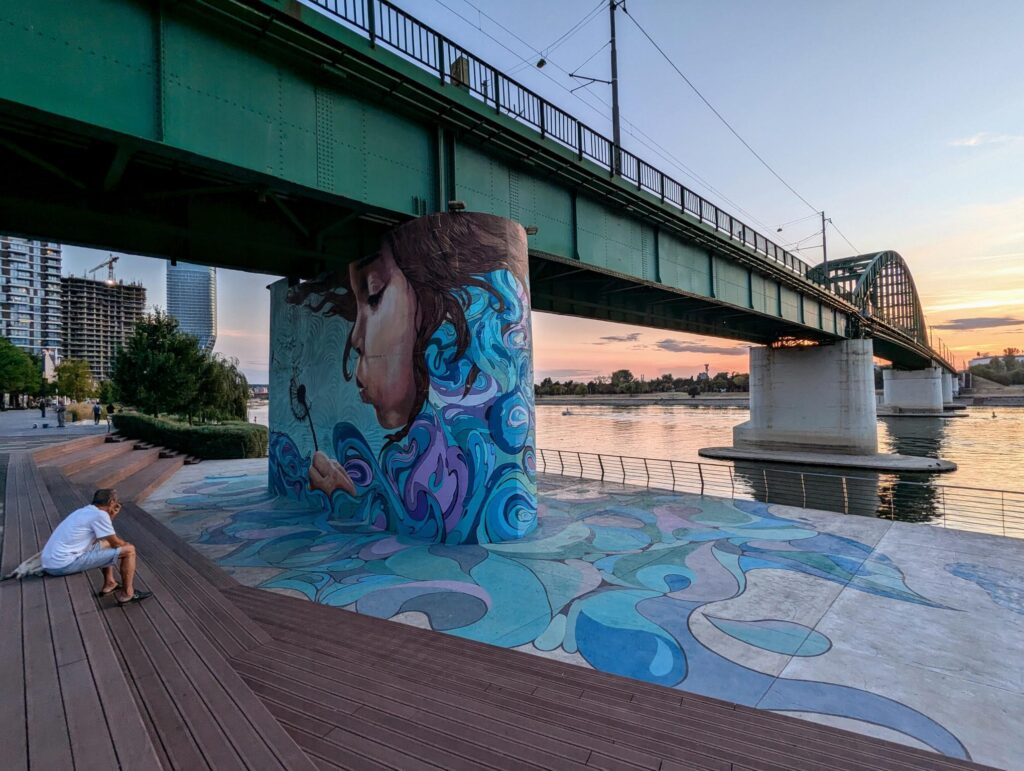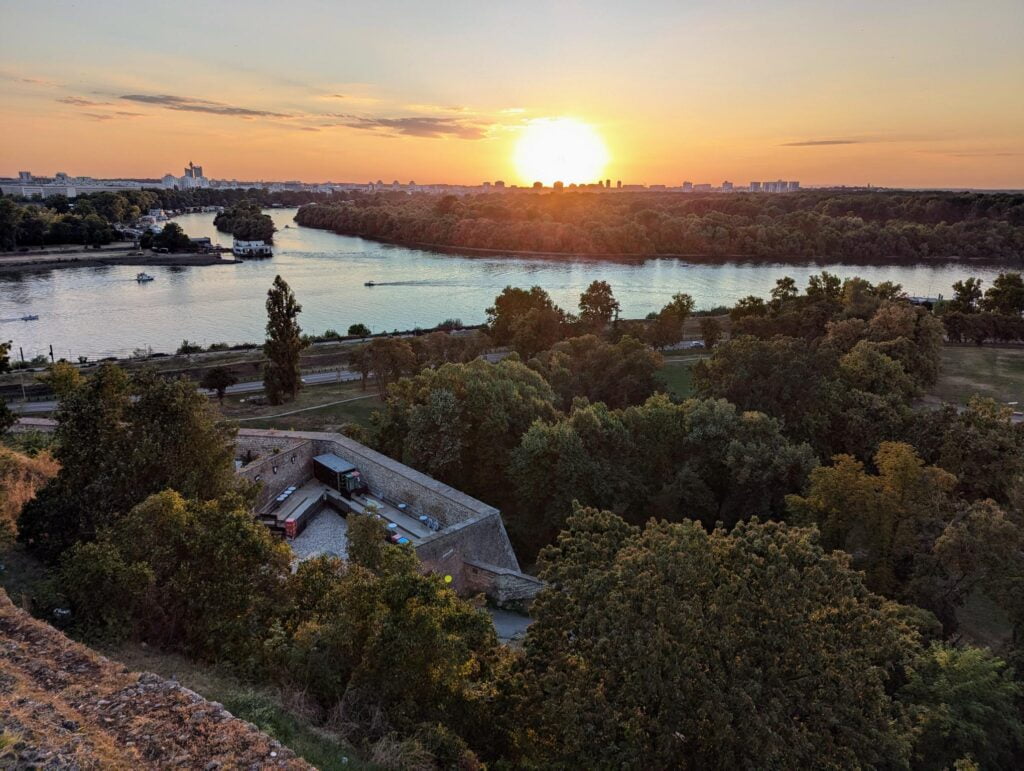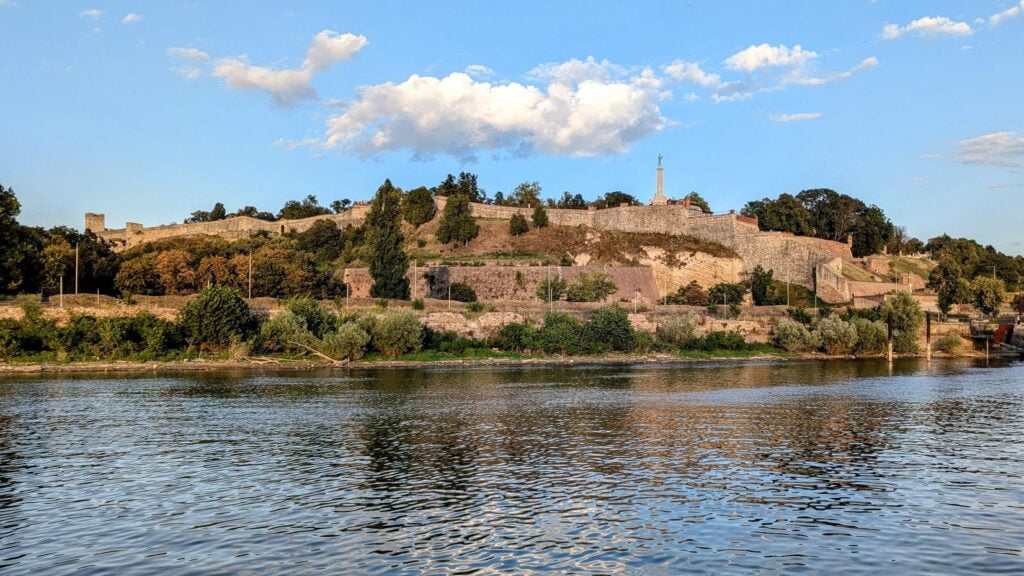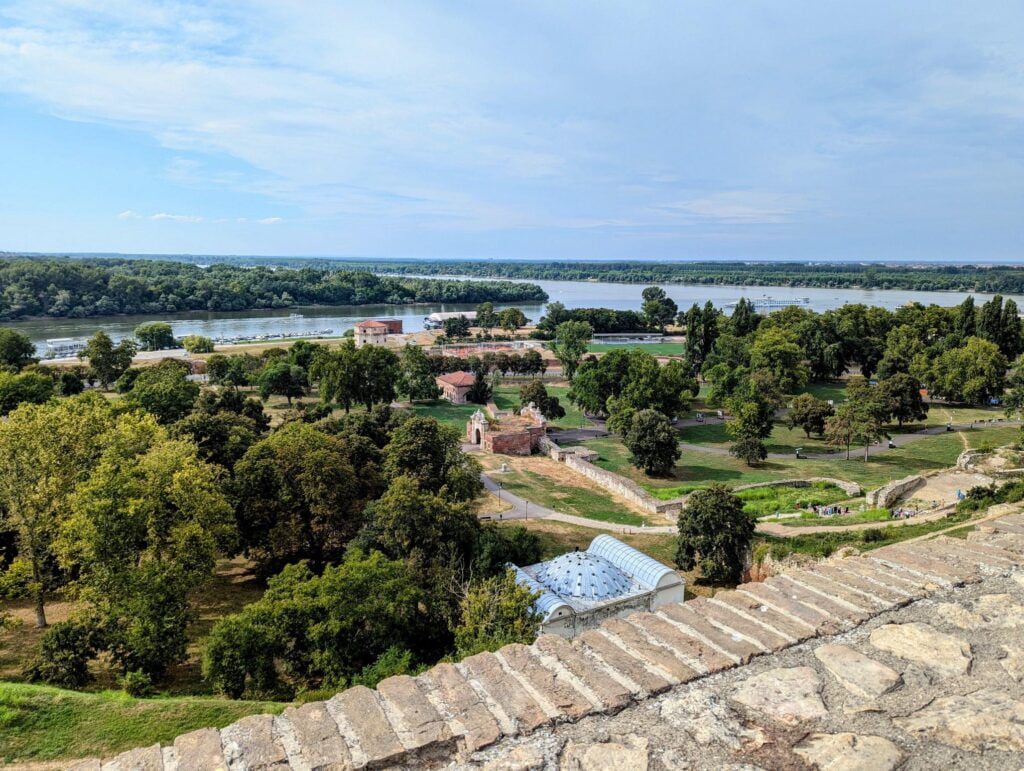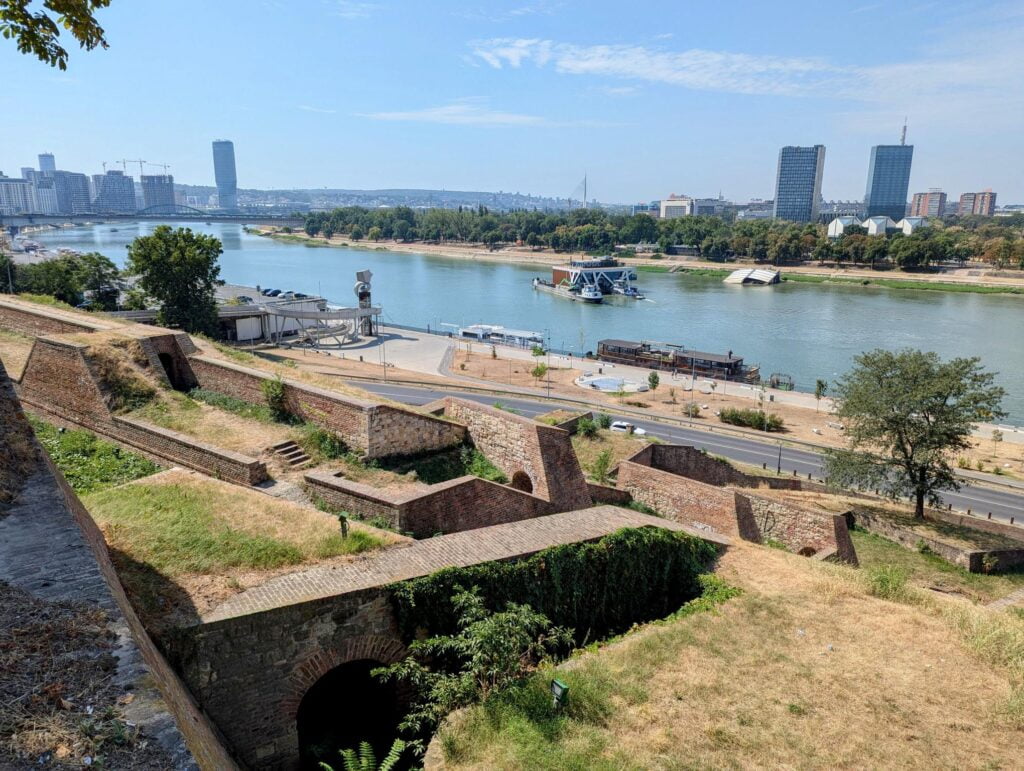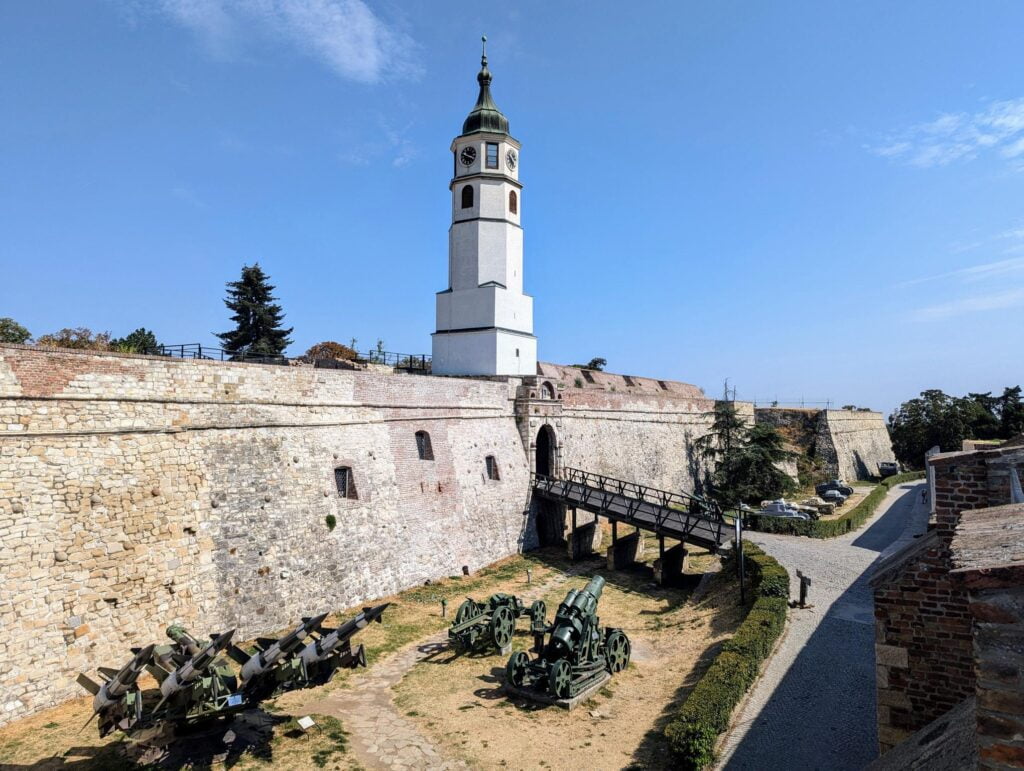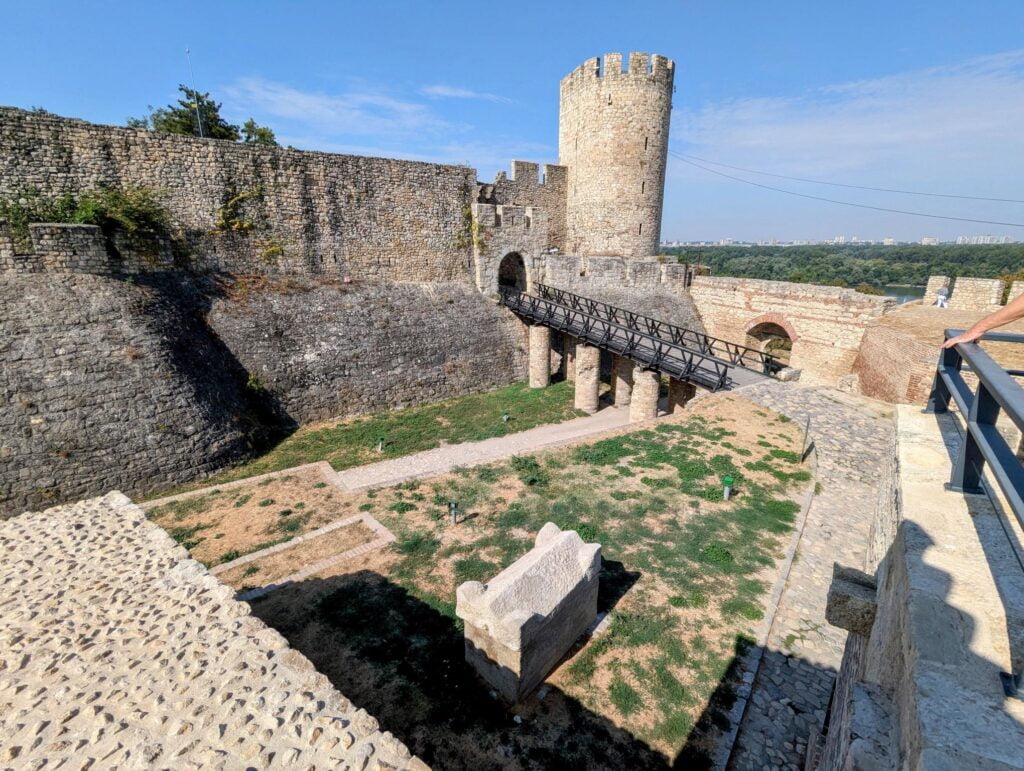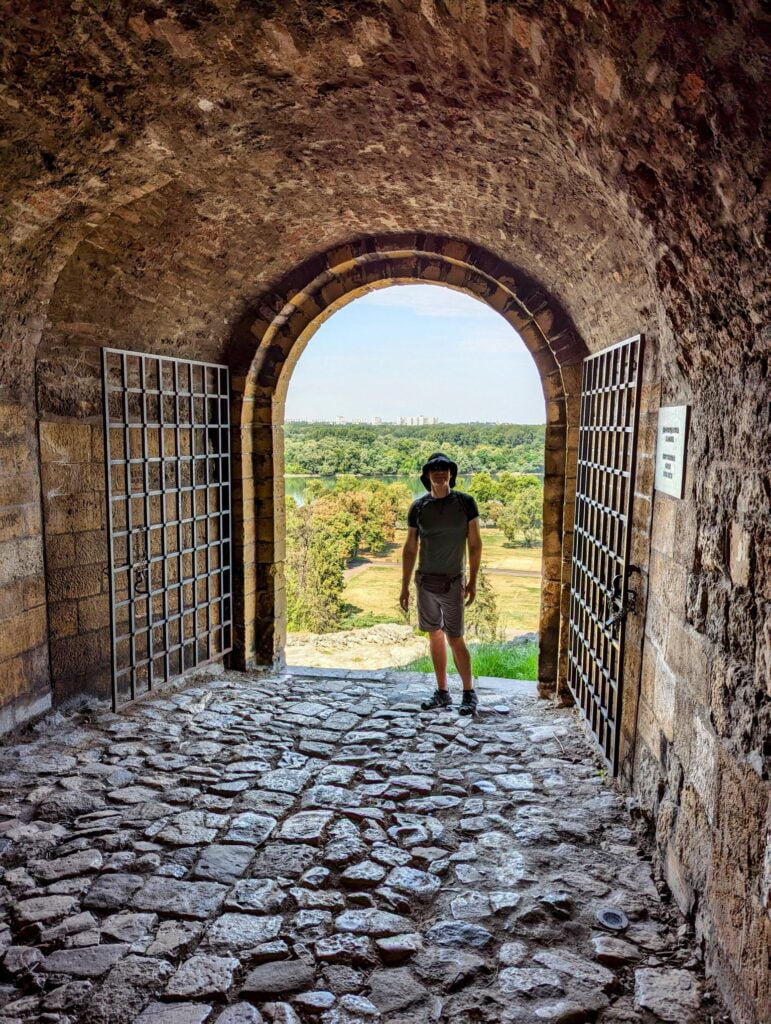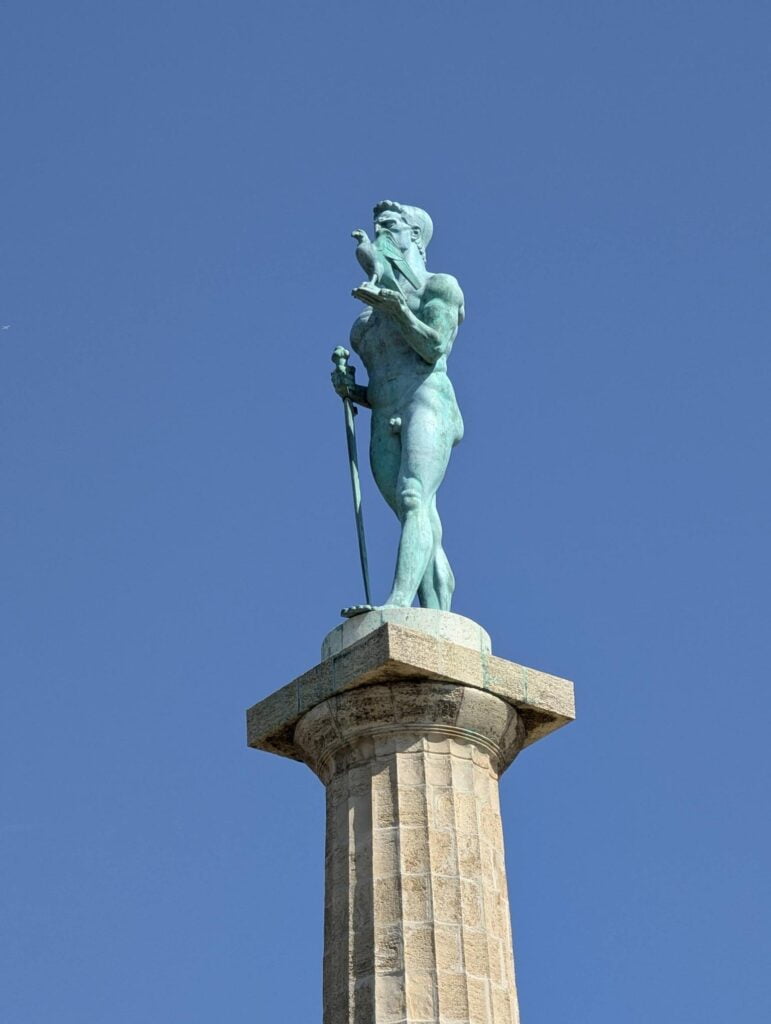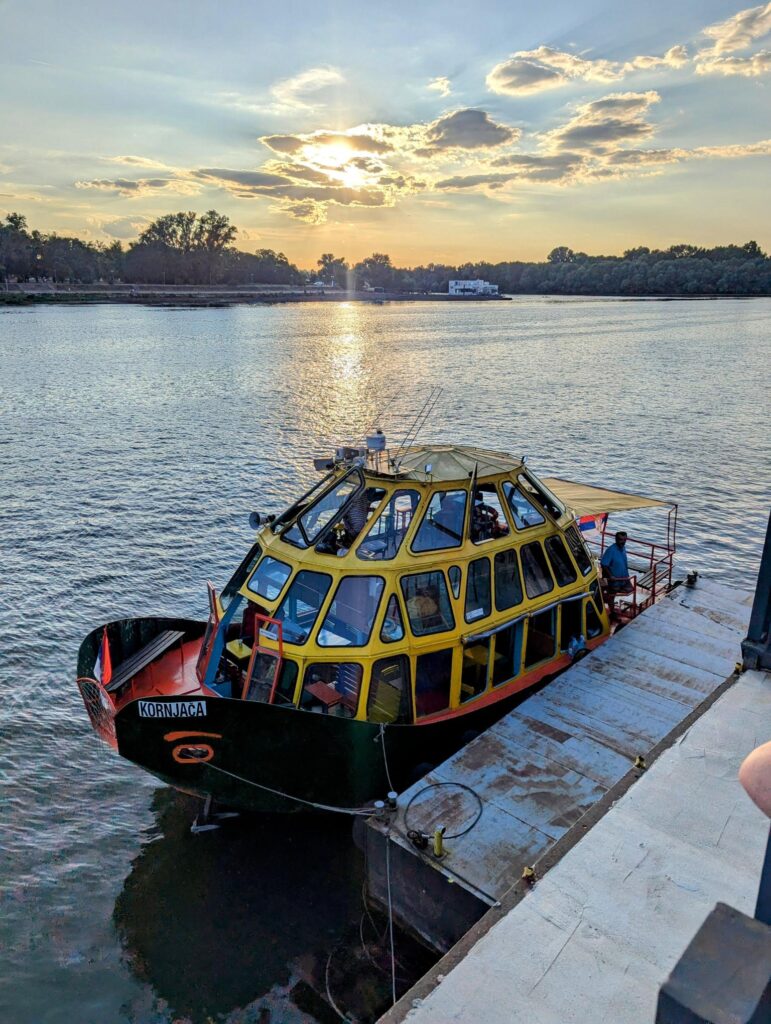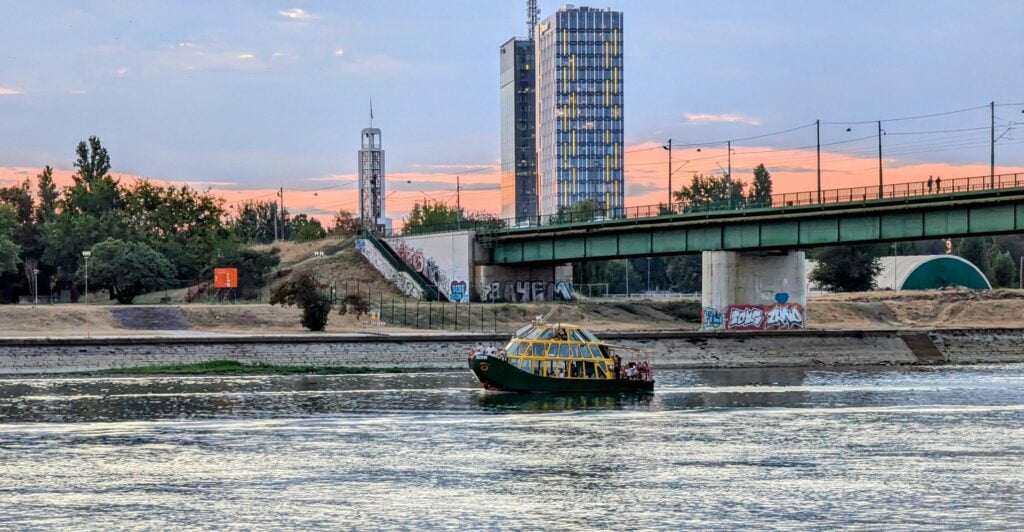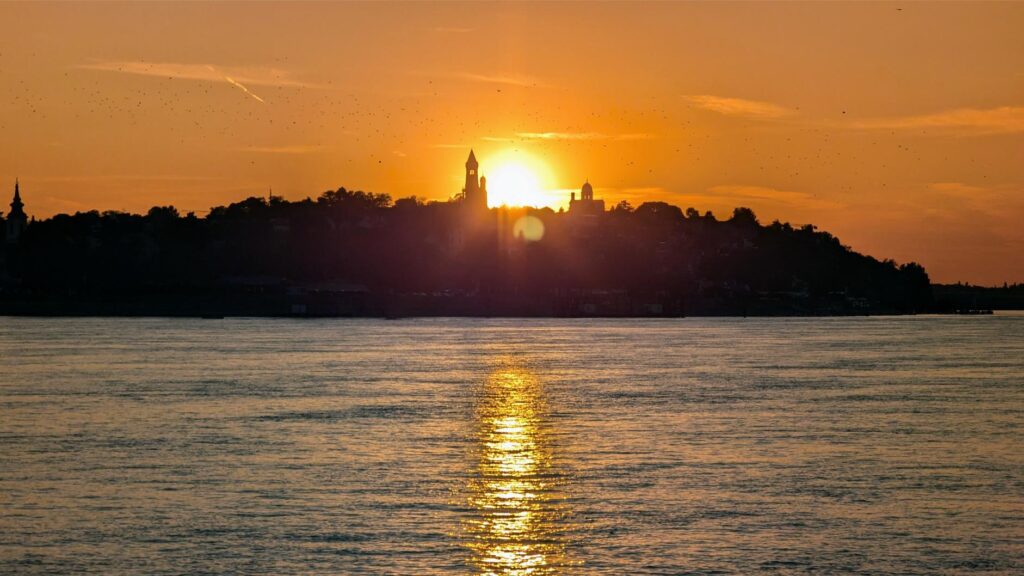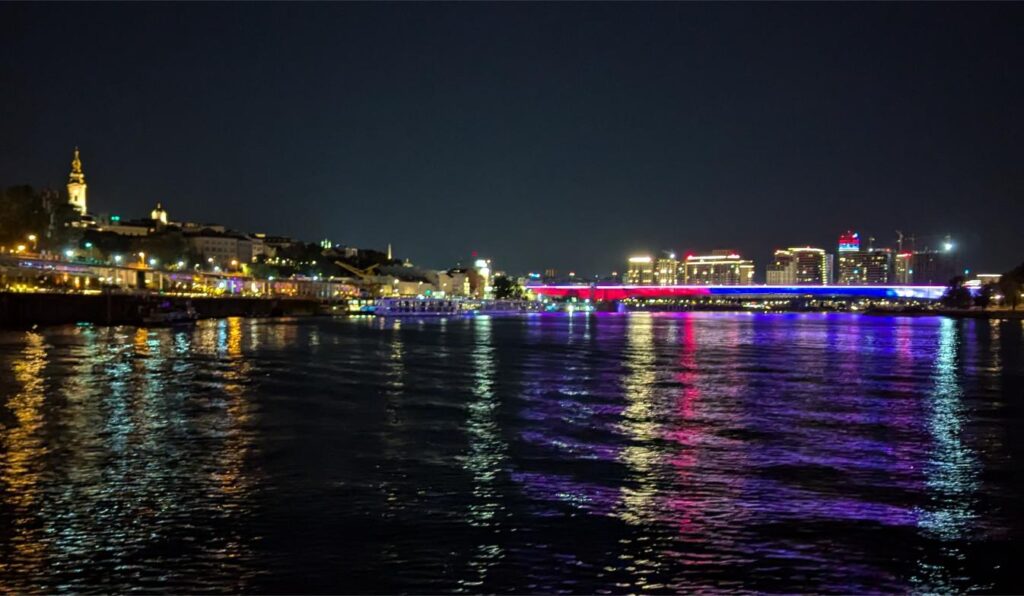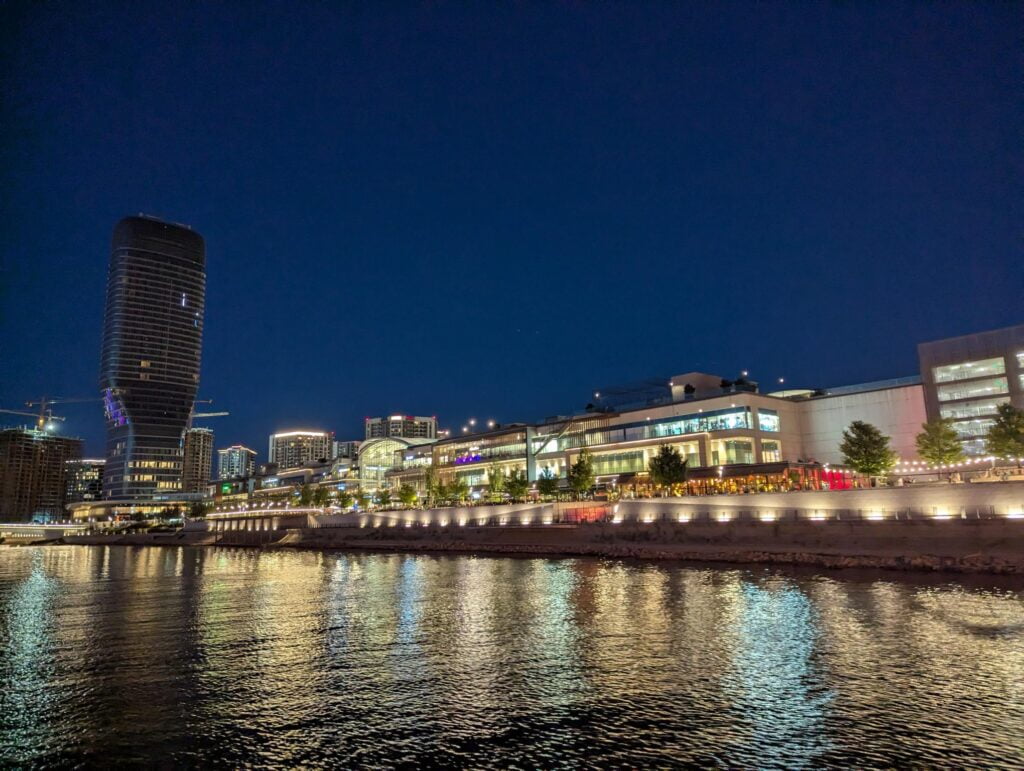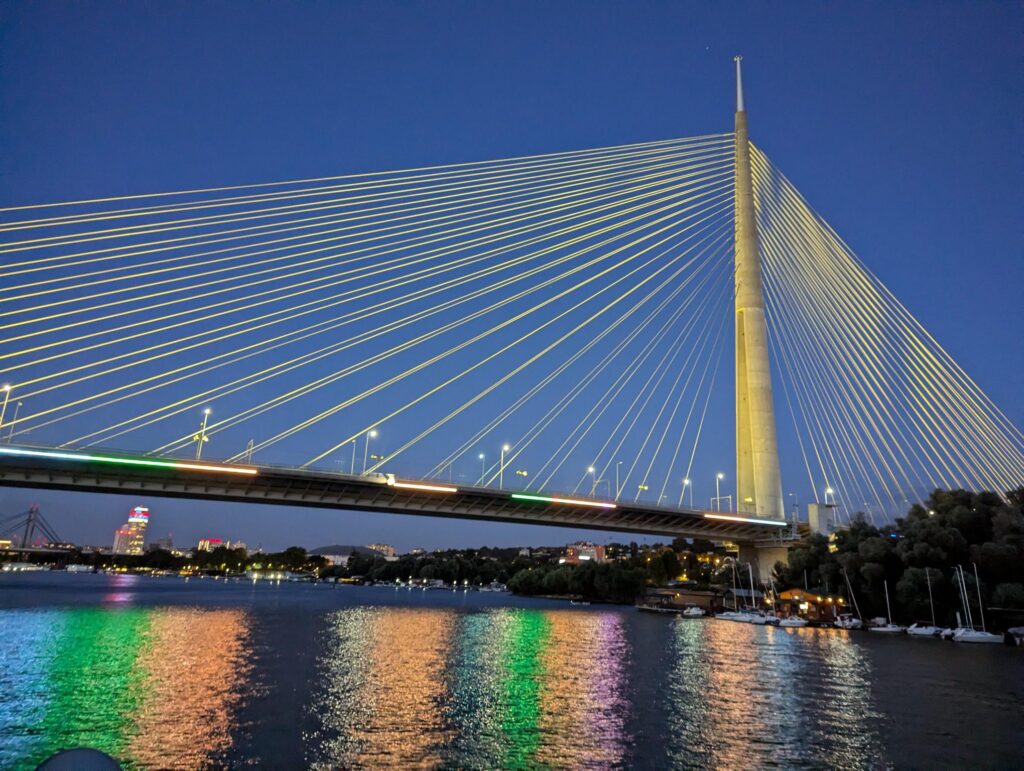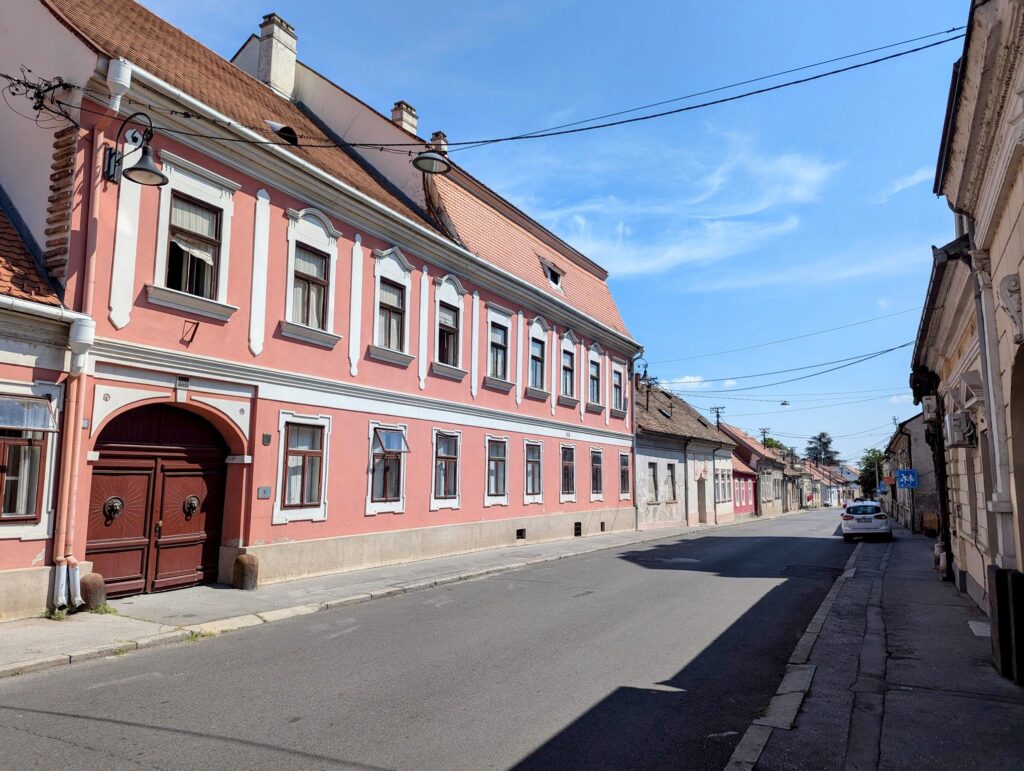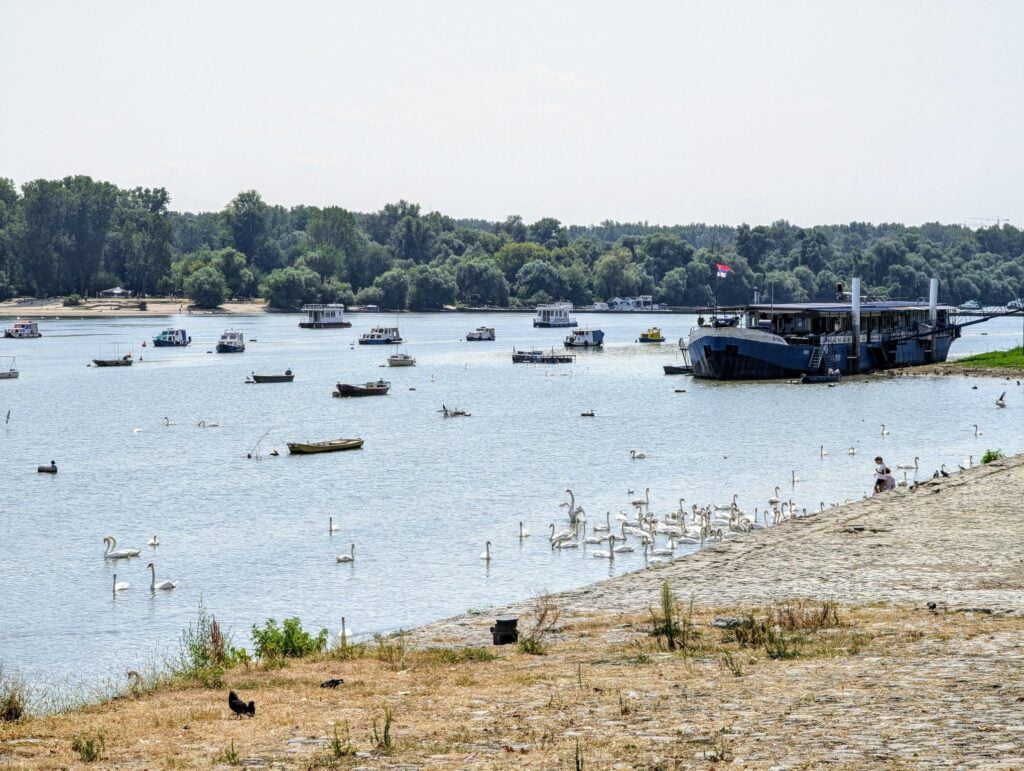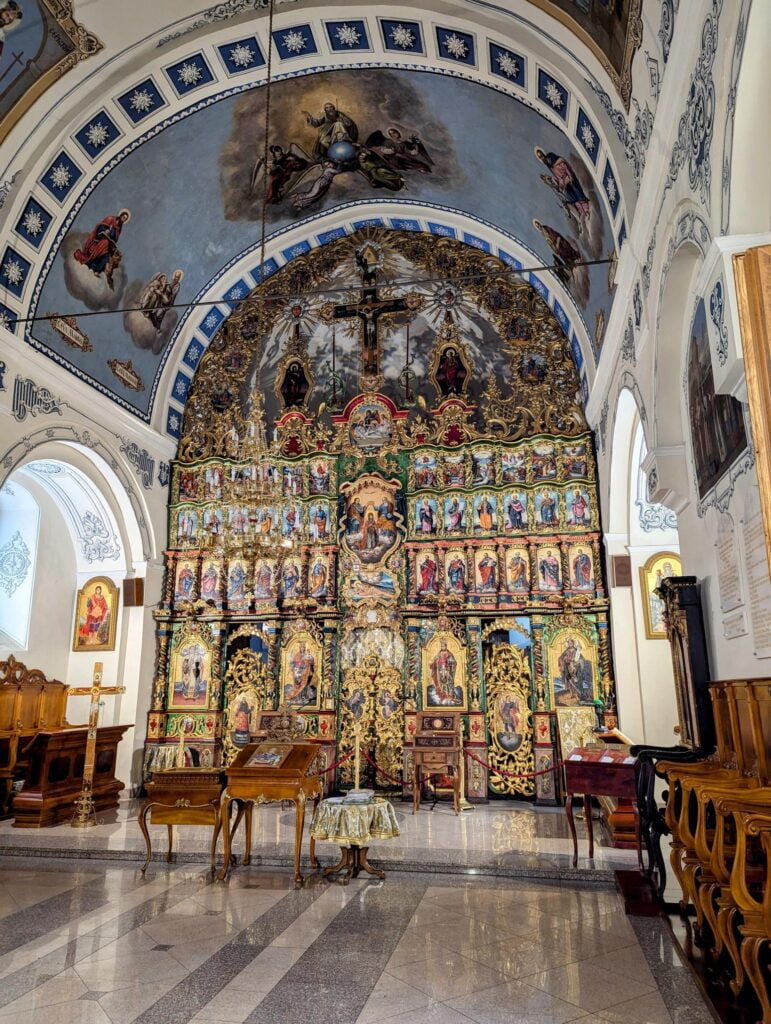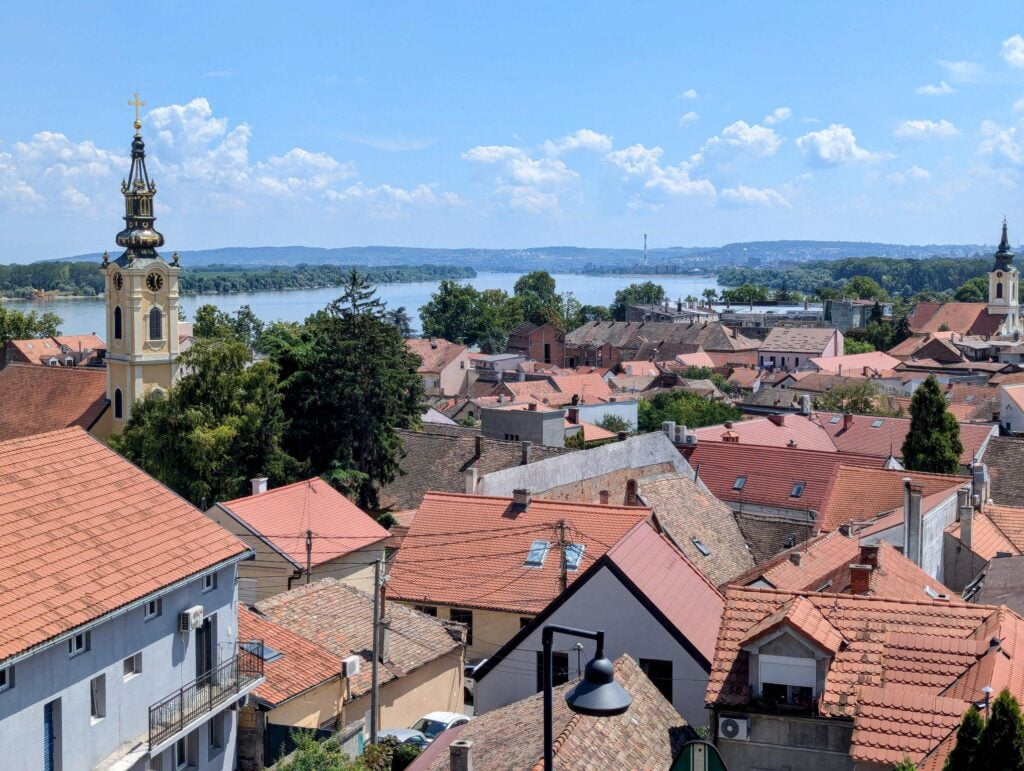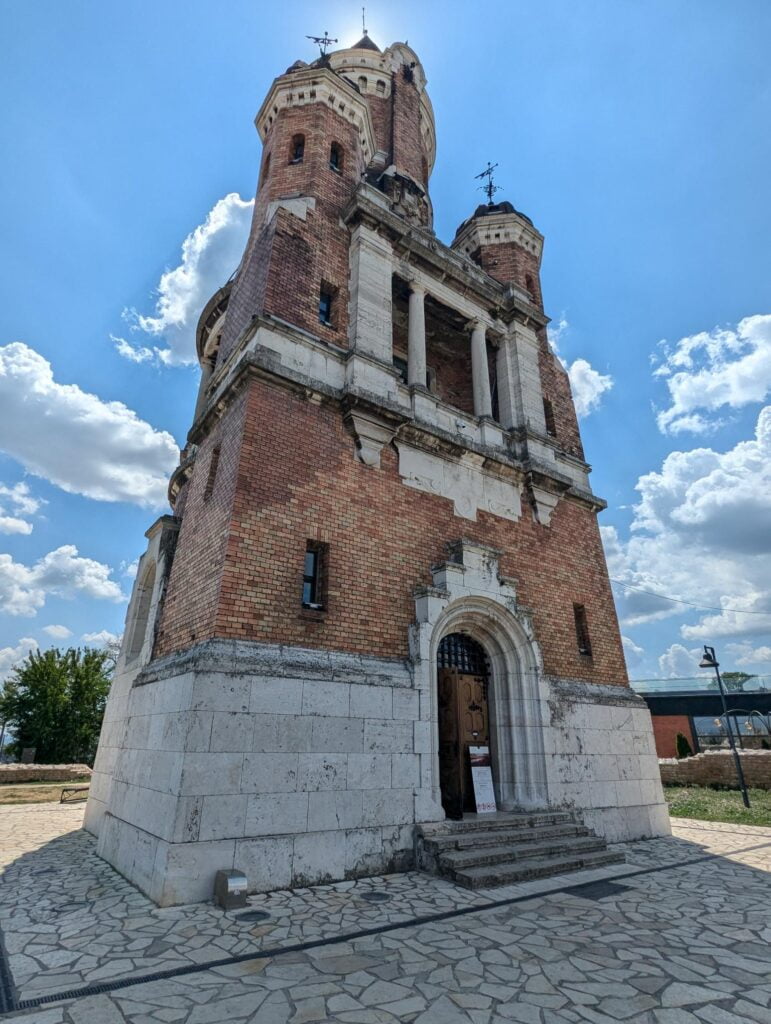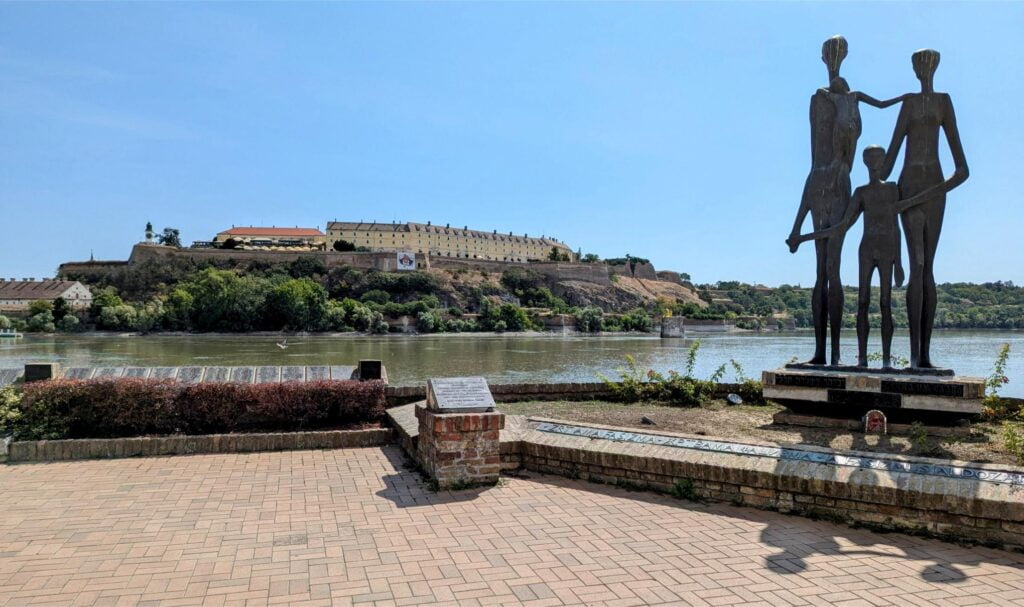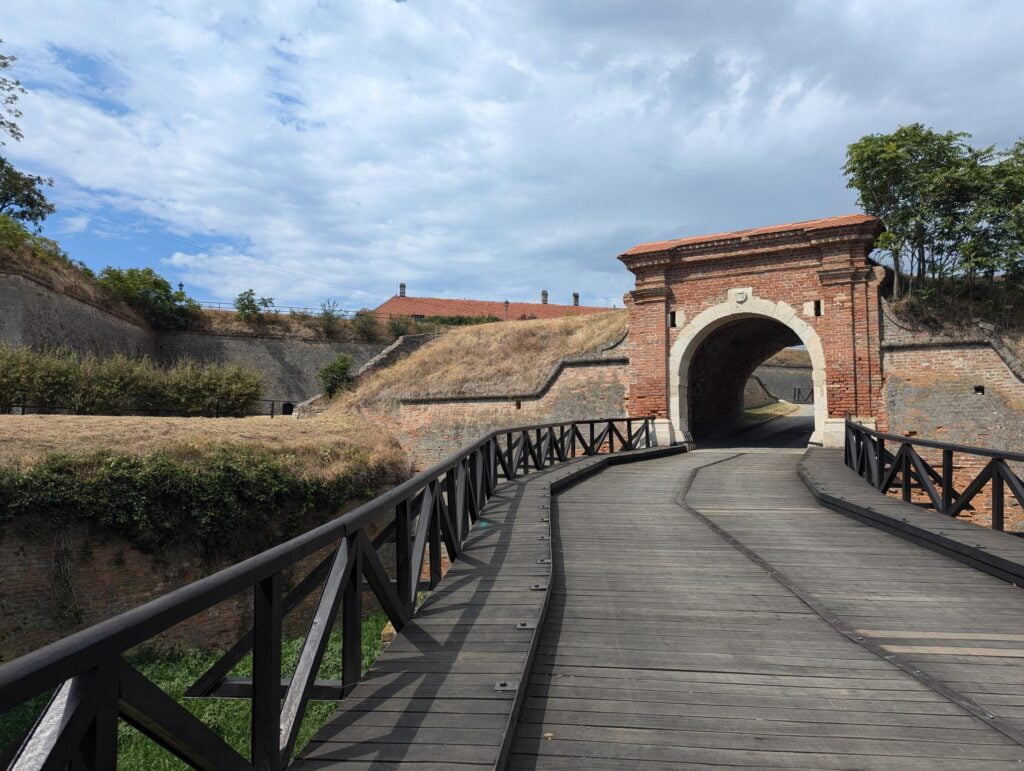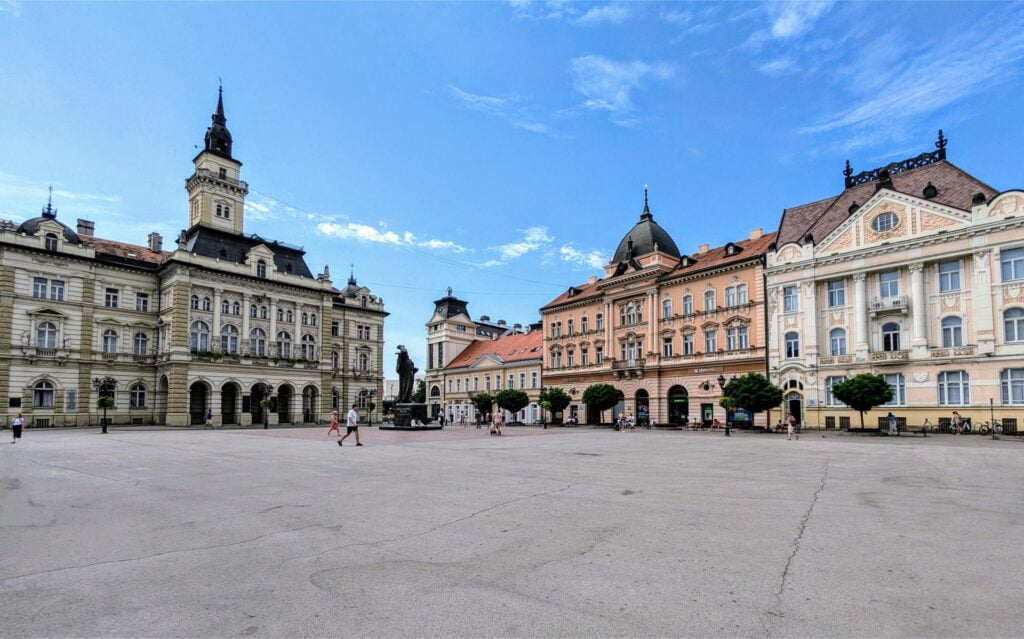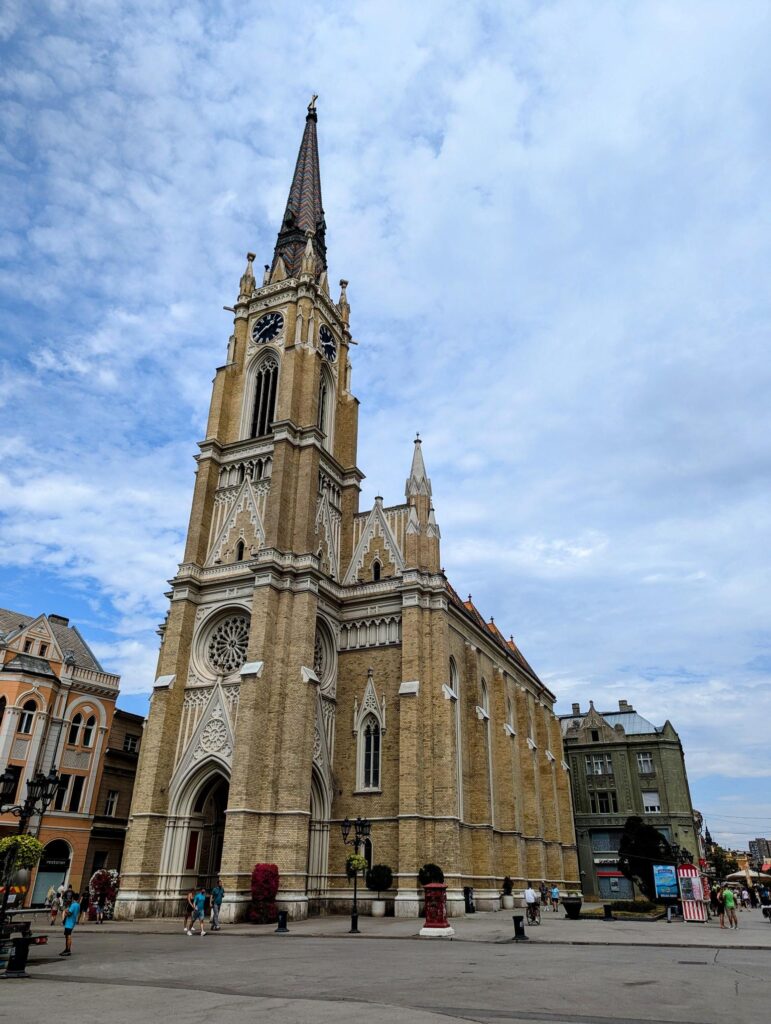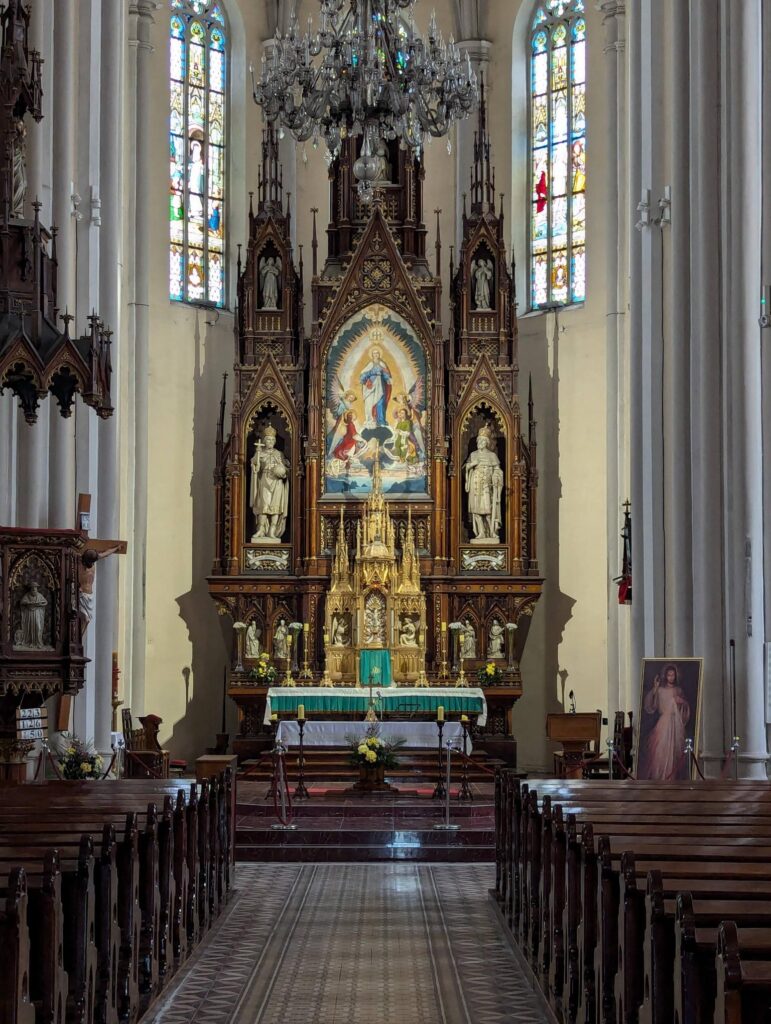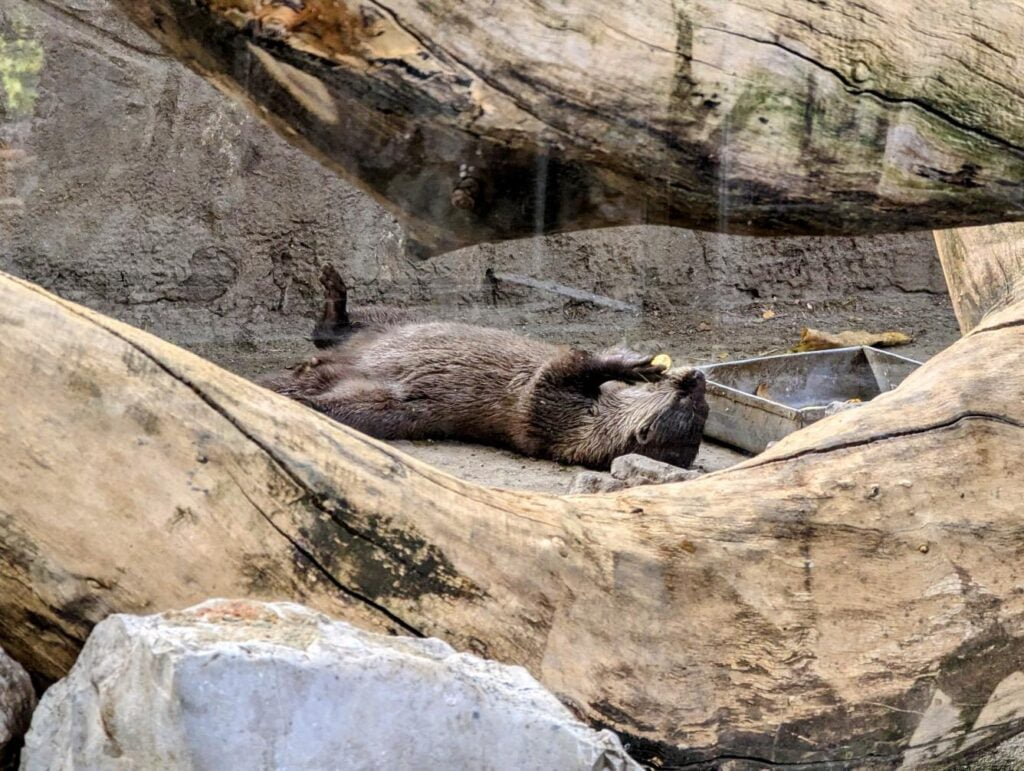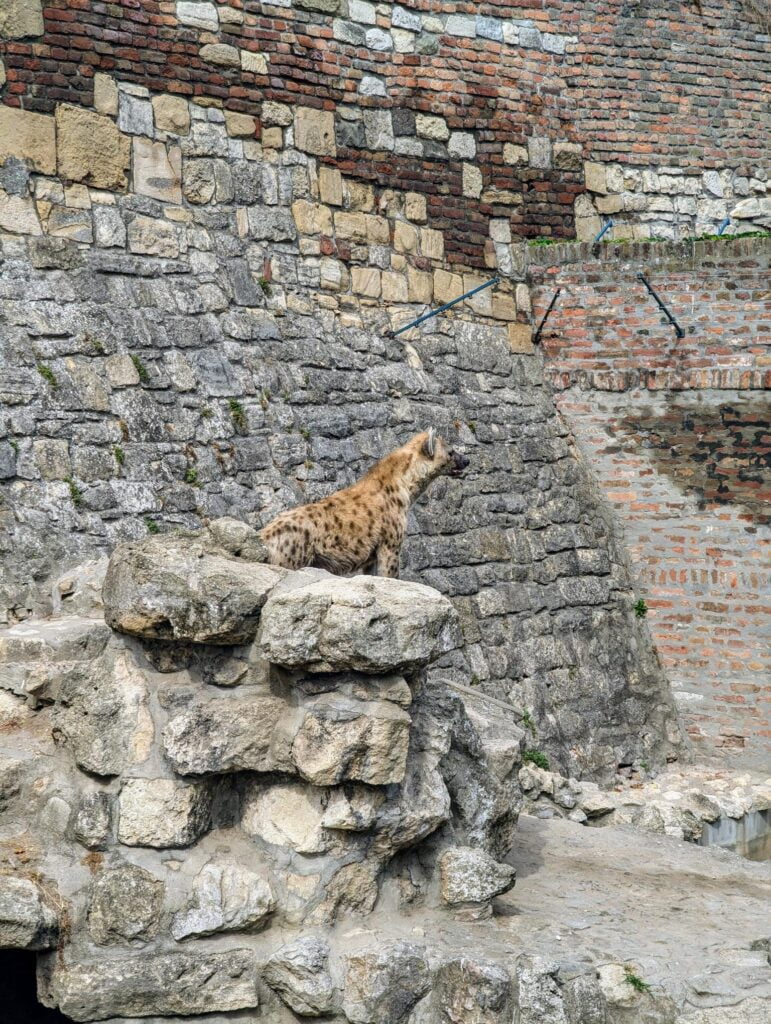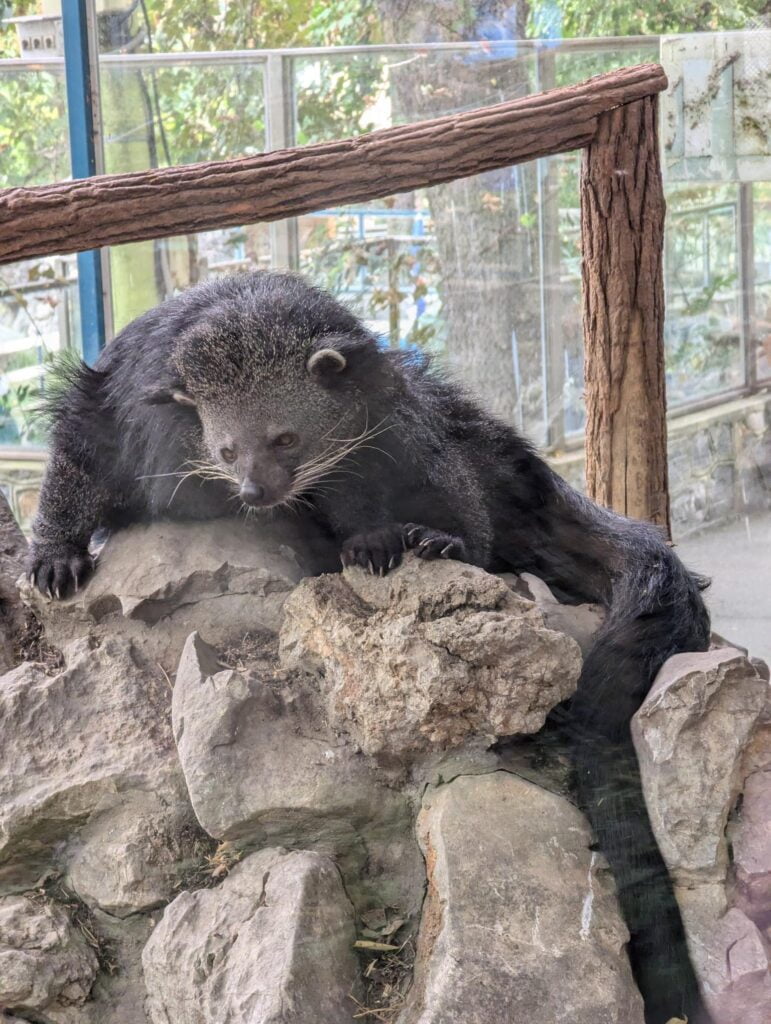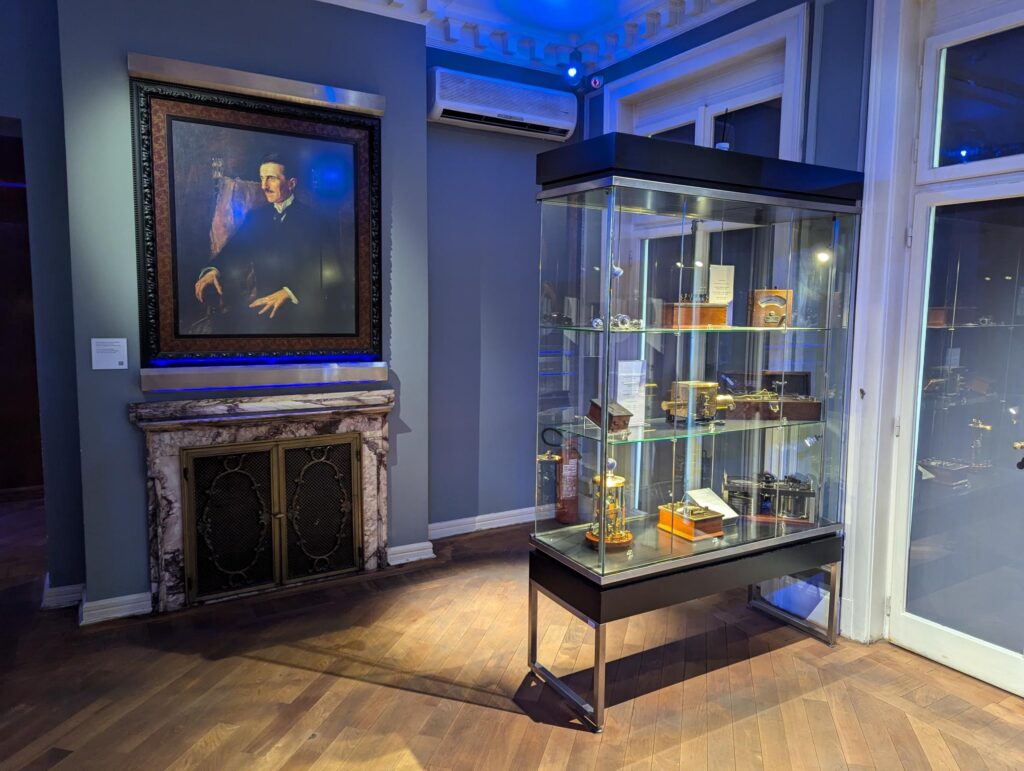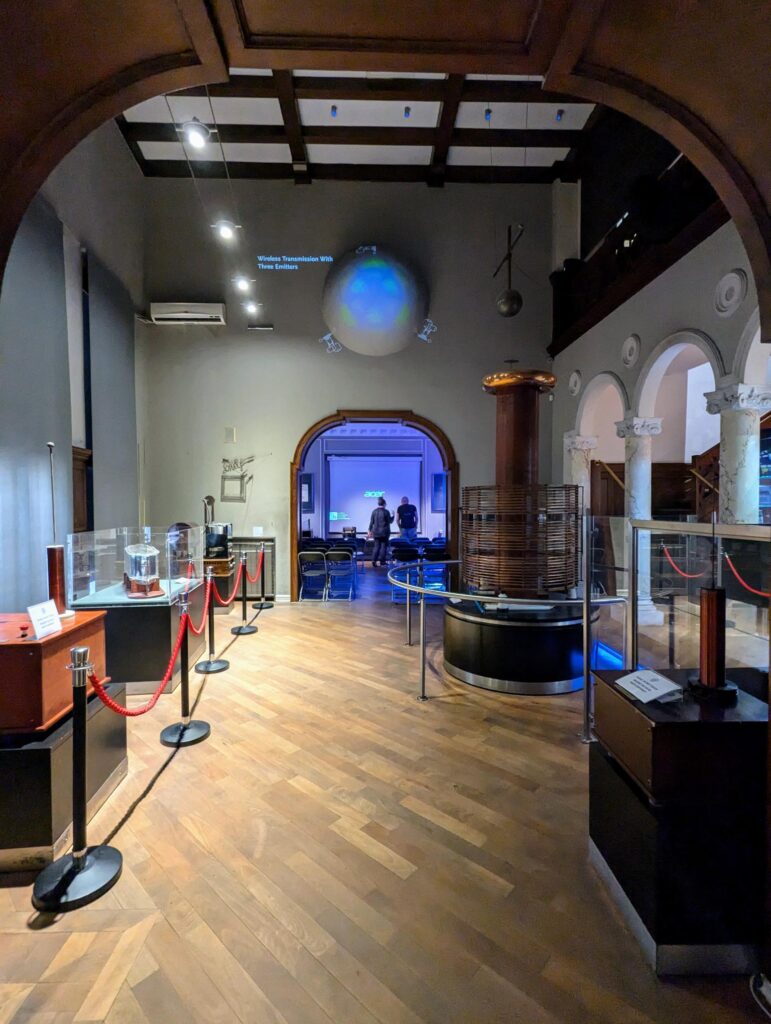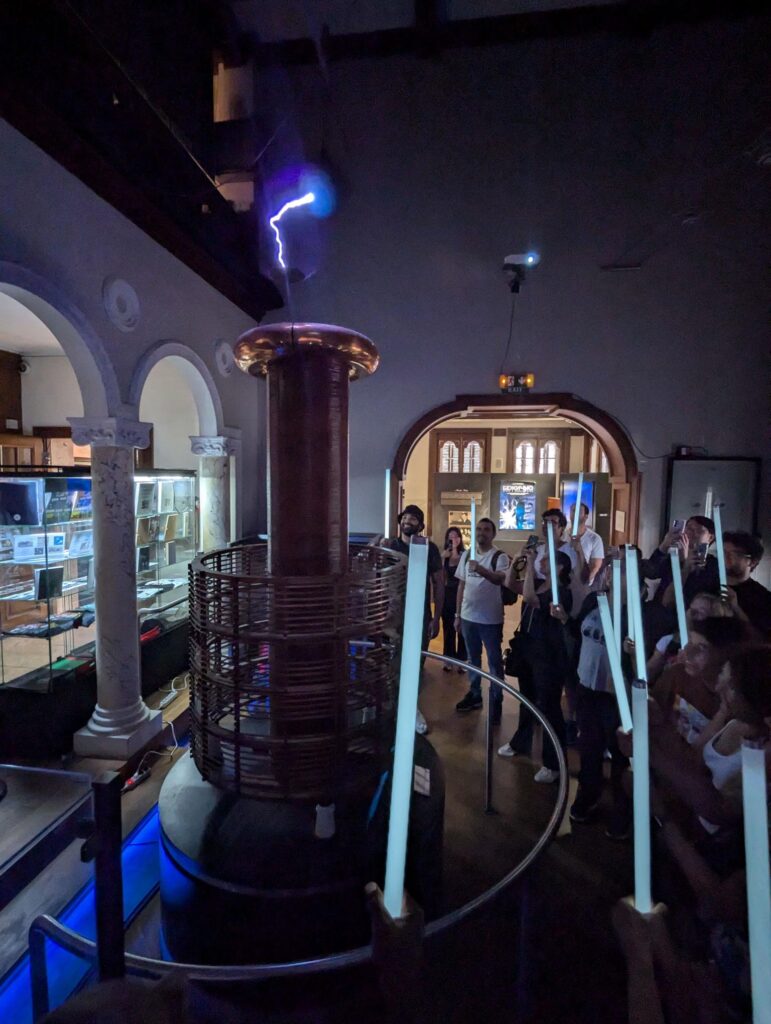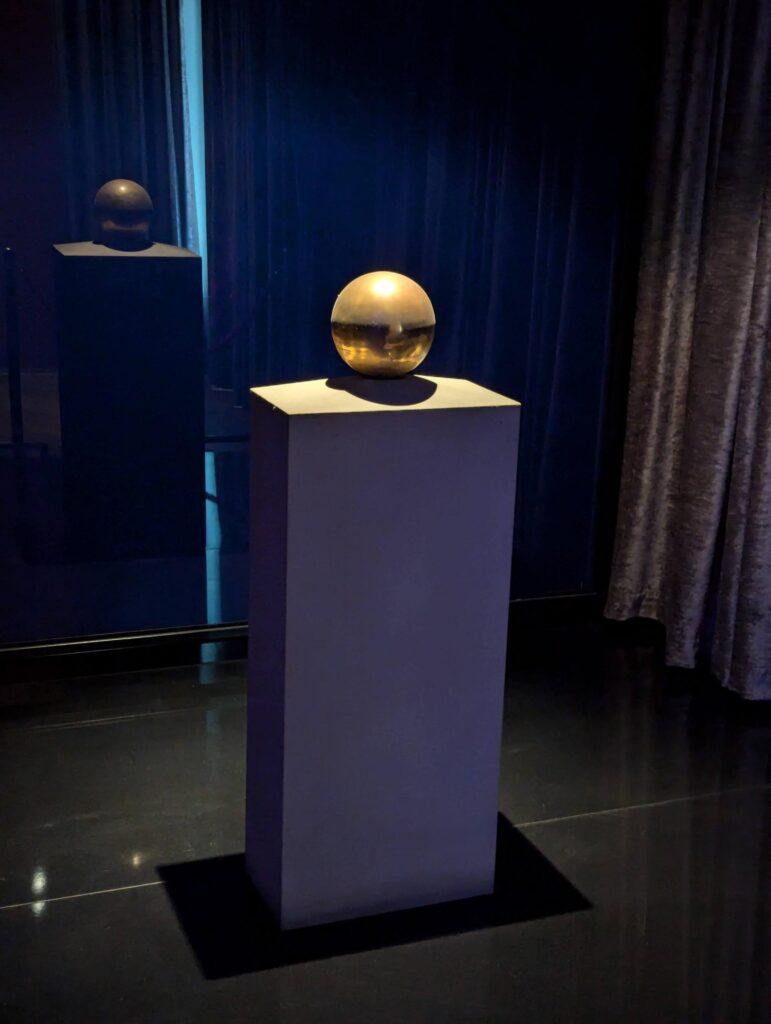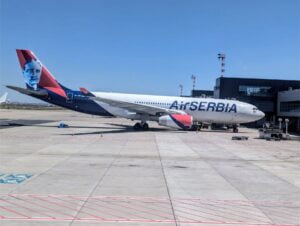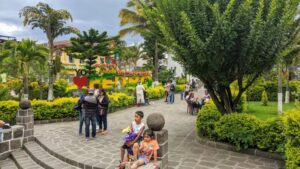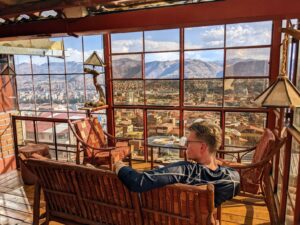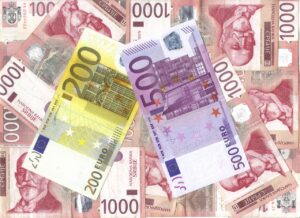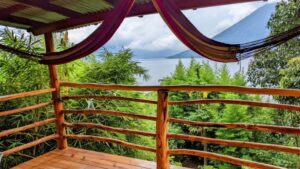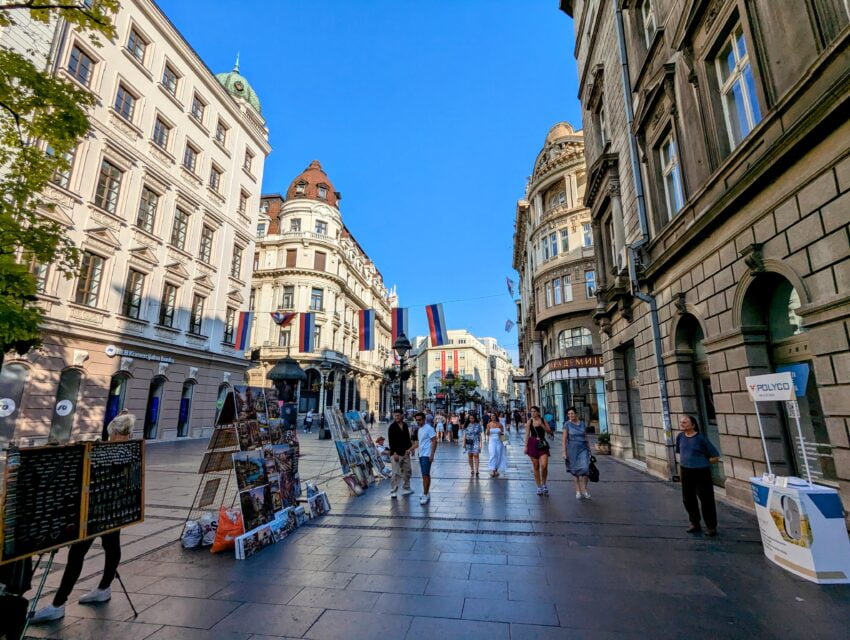
Our Steamy Month In Belgrade (Serbia)
Greetings everyone!
Our month in Belgrade is quickly coming to an end, so we figured we should get everyone up to speed on what we’ve been up to.
We’ve been having a good time and have enjoyed Belgrade quite a bit. But Serbia has made our heads spin with all of the cultural and language differences!
Come see what we mean.
Surviving The Serbian Language
Rhonda and I admit we have never felt this helpless with our ability to communicate in a foreign land.
Sure, we use a survival Serbian phrase list for the basics, so if we need to ask a simple question we generally can do so.
Ordering food we know from a menu?
No problem.
Getting admission into a museum?
Easy.
But dialog that involves any sort of back-and-forth can be an anxiety-driven exercise for both parties.
It’s true that quite a few Serbians in Belgrade know English, but I would not say that is the majority. So that has definitely put a bit of a damper on what we usually are able to accomplish, compared to our Latin America and Spain travels.
Two roadblocks seem to keep us from making faster progress with the language.
(1) Few words in Serbian sound anything like their English counterparts. So you can’t cheat your way through some situations like you can with Spanish or French.
(2) The Serbian language uses TWO alphabets. One uses Cyrillic characters and the other uses modified Latin characters.
You would think that the Latinized alphabet would be easy, but no such luck. Many of the pronunciations are very different, in addition to several unique characters that are used.
And you never completely know which alphabet you will need to deal with in a given situation. If it is a more modern establishment, the Latinized alphabet is more common. If it is a more old-school/governmental place, then Cyrillic is more likely. But you see lots of exceptions.
These alphabets are especially problematic when going out to eat.
You may receive a menu that is completely unintelligible to you, although sometimes English subtitles are provided. And even if you use Google Translate on a photo of the menu, the translation doesn’t often convert into anything that makes sense.
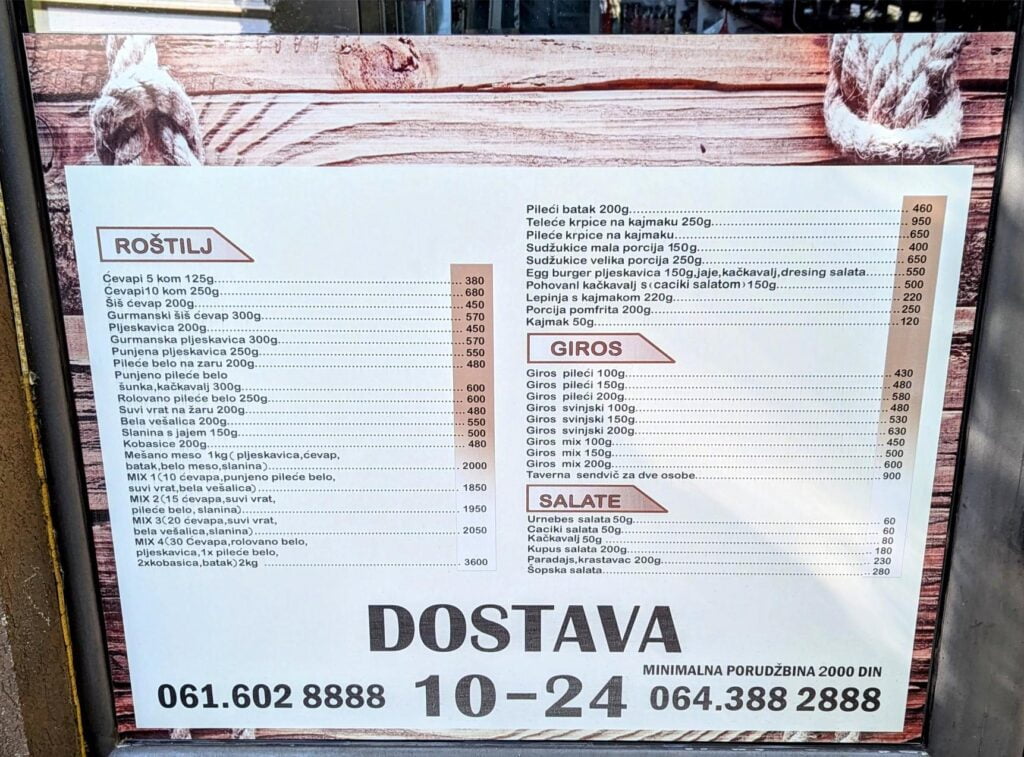
Needless to say, this amps up the stress of a nice night out considerably, so we find ourselves spending much more time researching places that use at least a little English.
Sadly, this means we eat out in touristy areas more often than we prefer.
But we are improving our survival Serbian.
We have gotten good at asking for English versions of menus, or asking if a person can speak English if the need is there.
We also know how to say hello, please, thank you, and all of the little polite phrases that can grease the wheels of amicable communication.
And we are slowly increasing our vocabulary by shopping at the supermarket, which has been a great way for us to learn new practical words.
When we know we will be in a situation that involves real communication, we write out a script in Serbian in advance (thanks, Google Translate!) and show it to the person we are trying to talk to. This works particularly well at pharmacies and bus stations.
Bottom line, we are making things work.
Getting Around Belgrade Using Public Transportation
Based on our complaints about our ability to communicate, you’d think that getting around Belgrade would be a problem.
The opposite, in fact.
Belgrade is a pretty walkable city. But when the distances get a little far, the public transportation system is a great option.
The Belgrade public transportation system is extensive and easy to navigate, using a combination of Google Maps and their homegrown app Beograd Plus.
And thankfully, this app has an English language option.
Through the Beograd Plus app, we purchased monthly passes for Area A, which provides unlimited bus and tram rides throughout the city. At 2,200 RSD ($20.40 USD) per ticket per month, it is a pretty sweet deal.
And the ticket is on the app, so when needed you just show it on your phone.
The way metro tickets are handled is a bit different in Belgrade. You simply get on the public bus or tram you need and take a ride.
No scanning your ticket, no showing it to a driver or anything like that.
For weeks we wondered if we wasted our money buying tickets and started thinking that everyone just rode for free.
But once when going to the train station a uniformed metro official got on our tram and started asking passengers for tickets. We showed ours so there was no problem, as did many others.
But that may have explained why there was a mass exodus from our tram at the stop that the metro official boarded. 😉
Last, the quality of the tram cars and buses is HIGHLY variable in Belgrade.
When you take a tram, you may get a nice modern tram car that looks like a spaceship, has strong AC, and nice seats. Or you may get a tin box on rails straight from 1960 Socialist-era Yugoslavia, held together with duct tape and bailing wire.
When it comes to buses, it is much the same. Except the older ones seem to have been built in the 1970s or 1980s, with barely functioning automatic doors, dead AC, and no interior maintenance done at any point in their functional life.
This is actually a testament to the Serbian ability to keep long-in-the-tooth equipment running, and it becomes an entertaining part of the ride experience.
Make no mistake, the buses and trams are tidy and safe, even if the older ones are falling apart a little.
So if using worn-out equipment keeps the volume of people moving without long wait times, then so be it.
Serbian Culture – Don’t Talk Politics
Serbia, at face value, has a more serious culture, but that does not mean Serbians are unkind. Quite the opposite, actually. But you definitely get a sense that establishing a connection with the person you are speaking to before engaging in levity is the proper order of operations.
Thankfully the Serbian people seem pretty tolerant of non-Serbian speakers, particularly if efforts for smooth communication are made.
And it takes all of 5 minutes walking in downtown Belgrade to see that the locals have their own opinions about the Yugoslav war in the 1990s, as well as the role of NATO.
So if you have different political opinions, it is probably best to keep them to yourself.
Safety
For some reason, we are asked quite a bit about safety here in Serbia.
We wonder if we have missed something, but Serbia has been extremely safe in our direct experience. And supporting our view, Serbia’s crime statistics are more favorable than those of the USA.
Have we missed something? Seriously, it is perfectly safe in Belgrade presuming you use common sense.
Belgrade Weather in August – HOT!
We knew the climate in the Balkans could get pretty warm in the Summer, but man, the heat wave while we have been here has been brutal.
For the vast majority of our time here, temperatures have been in the mid-90s (F), but for a 10-day stretch, temperatures hit 100 F or more!
And unlike Madrid, Spain (which has similar temperatures), Serbia’s humidity levels are not that low. So the heat hits hard, to the point where you don’t want to be outside between 11 am – 6 pm.
This wouldn’t be a problem if there were lots of touristy things to do in air-conditioned environments, but in Belgrade, those are exhausted within about a week.
And did we mention that our Airbnb lacks AC?
So once we got out of tourist mode, we spent our mornings and afternoons dodging the heat by walking local malls, shopping in supermarkets, or hanging out in our apartment doing various hobbies. In the evening, we’d go out for walks along some of the major boulevards or along the Danube River by the waterfront.
So it hasn’t been that bad of an adjustment. But we admit that the weather shut down many of the day trips we were considering.
Doing Fun Stuff
There is quite a bit to do and see here in Belgrade, and we would have done more of them if the weather was a little less scorching!
Among our favorite activities were:
Checking Out the Local Neighborhoods and Architecture
Quirky neighborhoods abound in Belgrade, each with its own distinctive style.
And some of the churches, residential areas, and government buildings are really impressive!
Visiting the National Museum of Serbia
The National Museum of Serbia is an excellent (and inexpensive) museum featuring archaeology and art of the region. We were pleasantly surprised at the quality of the exhibits on display, and we have a new respect for Serbian artists of centuries past. The works of Pavel Djurkovic, Paja Jovanovic, and Jovan Stajic-Toskovit really caught our eye.
Visiting the Belgrade Waterfront Area
Strolling along the waterfront is always a great way to get out of doors once the sun starts getting low in the sky. Great riverside breezes and great views!
Exploring Kalemegdan Park and Belgrade Fortress
A key fixture for tourists and locals alike, Kalemegdan Park has a network of paths that lead to different viewpoints, museums, and places to hang out. And it is integrated into the sprawling Belgrade Fortress, which makes for some interesting photographic compositions.
Going On a Belgrade River Cruise
We stumbled across the Cruise Belgrade tour company early in our stay, which offers a variety of options at different price points.
We greatly enjoyed their 2-hour sunset/night cruise up and down the Danube in their Turtle Boat! And at 2950 RSD ($28 USD), the price was right.
We had a great time seeing the sights along multiple waterfronts from the turtle’s eye view!
Exploring Zemun
Just across the river from Belgrade, the coastal town of Zemun was gobbled up during Belgrade’s developmental expansion in the early 20th century. The locals still consider themselves to be separate from the capital, even though it is only spiritually at this point.
Zemun has an interesting history, dating back hundreds of years. We had a lot of fun exploring the waterfront, towers, graveyards, and churches!
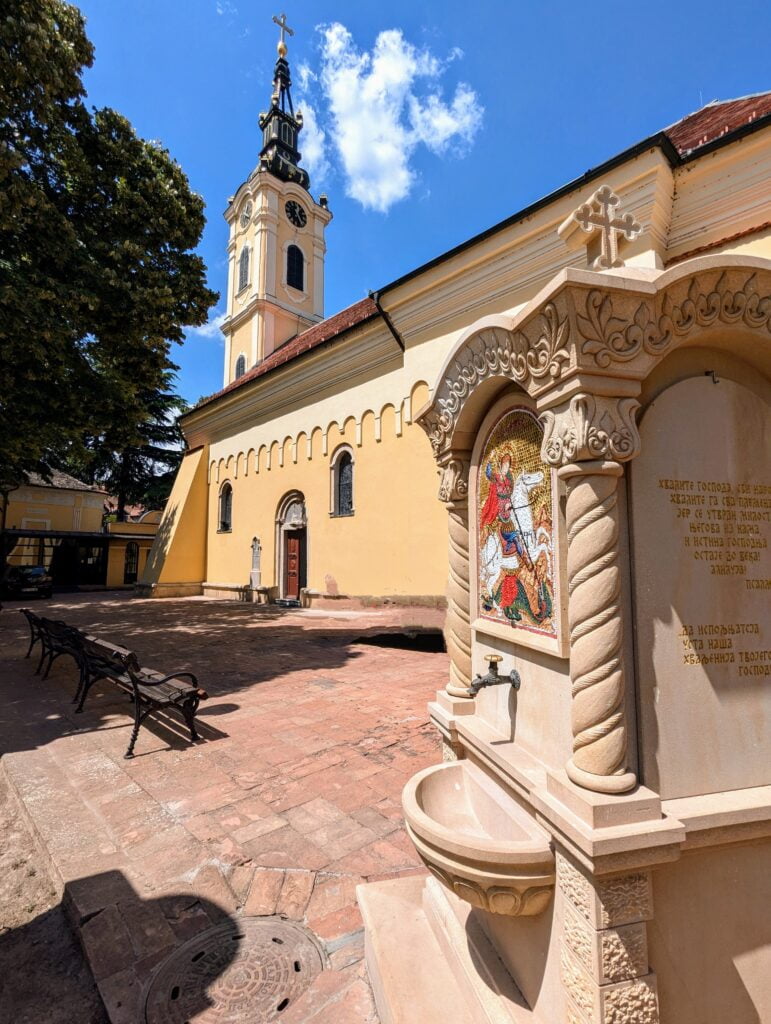
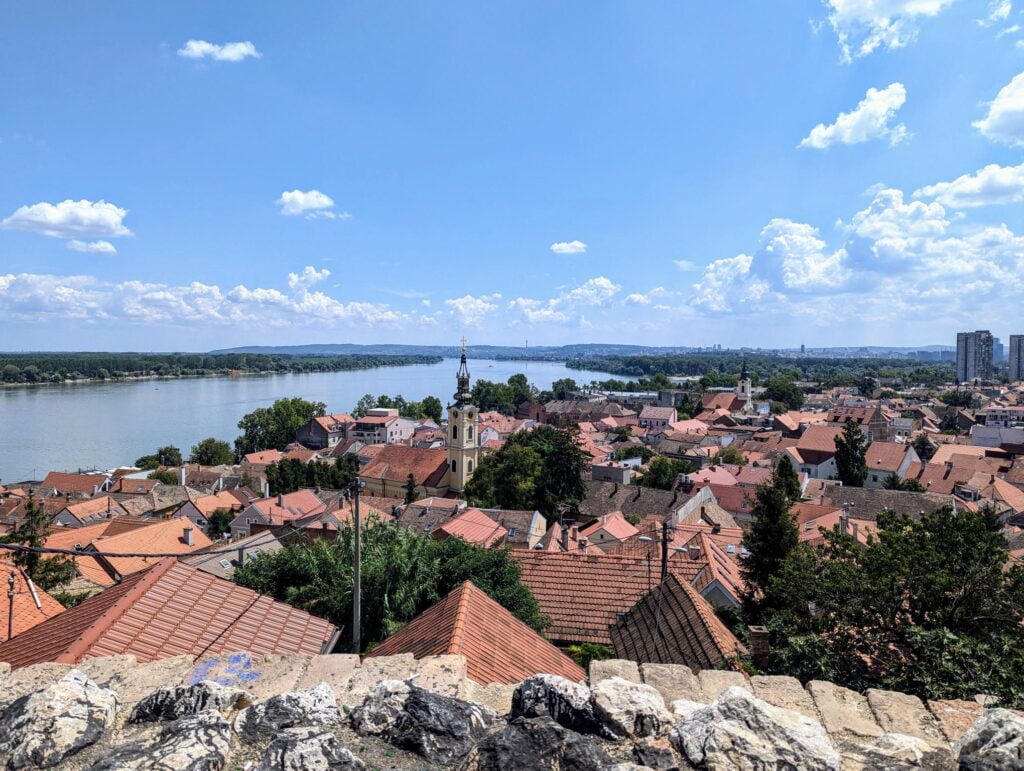
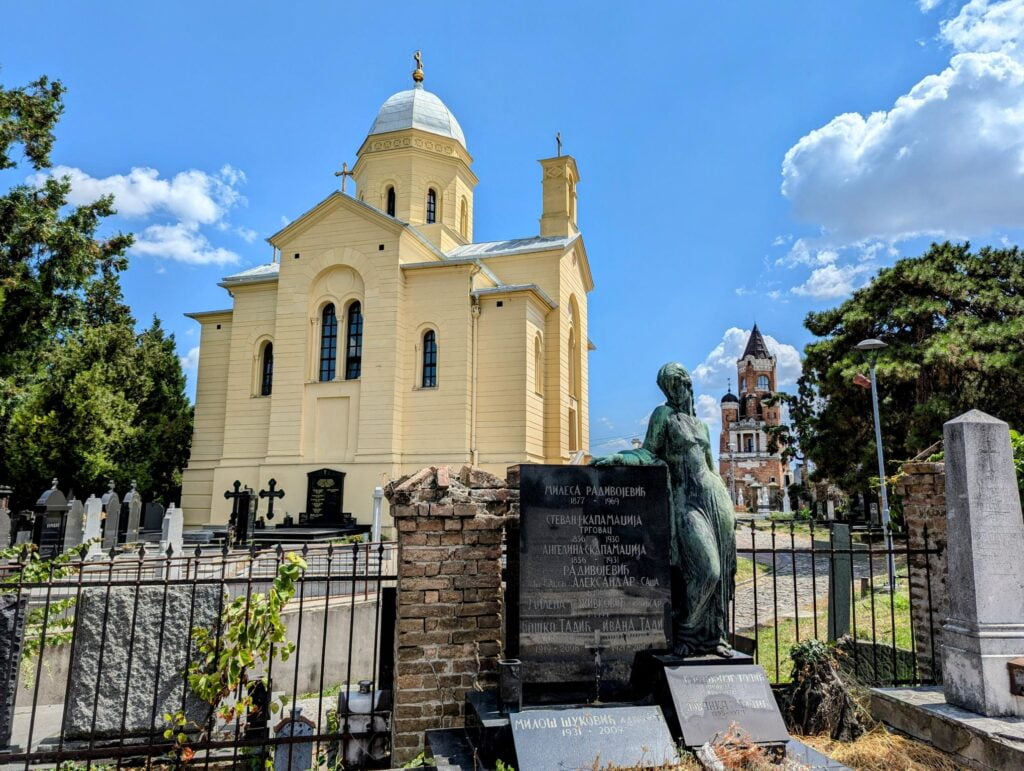
Taking a Day Trip to Novi Sad
Only a 30-minute high-speed rail trip away (962 RSD [$8.96 USD] for a round trip ticket), exploring the city of Novi Sad made for a fun (and HOT) day trip.
We had a great time exploring the Petrovaradin Fortress complex, as well as the many impressive churches, cathedrals, and palaces there.
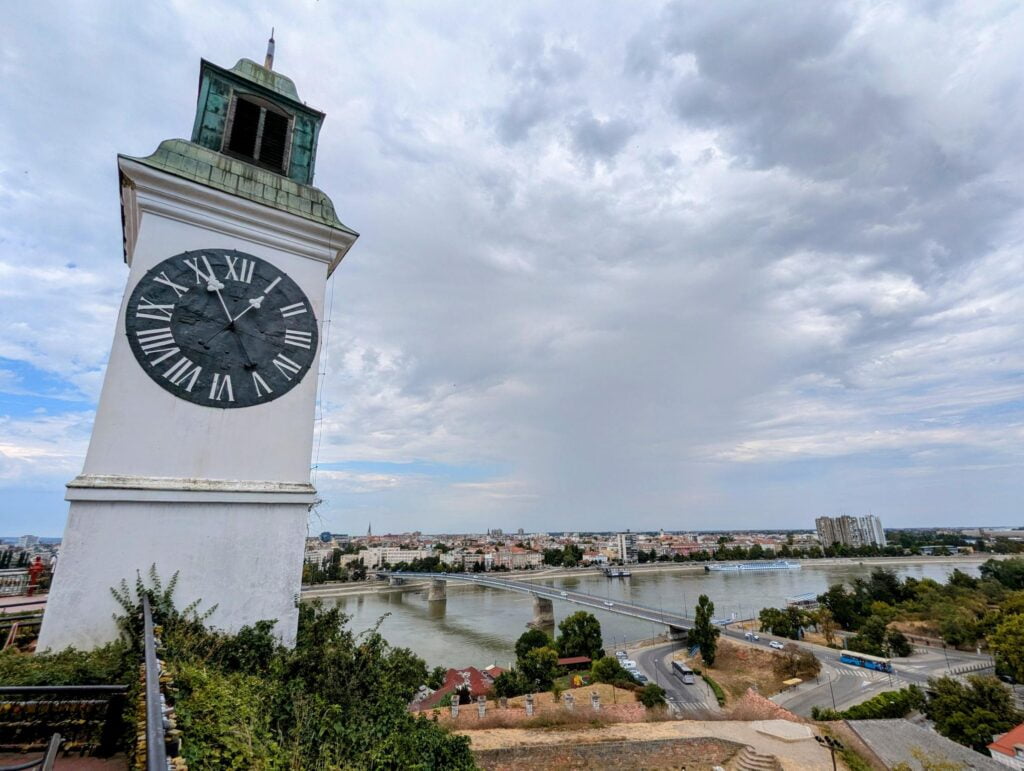

And retreating from the sun in the alleyways of the old town center was a great way to deal with the heat.
The Belgrade Zoo
At 650 RSD ($6.17 USD) per person to enter, the Belgrade Zoo was a nice 2-hour diversion. It is actually integrated into the Belgrade Fortress complex!
The animals in captivity are there because they would not survive in the wild, and they looked to be in excellent health overall.
The diversity of animals was pretty impressive, and here are a few of our favorite pictures.
They need to upgrade their primate facility though, which looked straight out of the 1950s.
Since they are in the middle of modernizing the elephant house, we have hope that they will do the same for the primates.
Paying Homage at the Nikola Tesla Museum
Of course, we couldn’t visit Belgrade without going to the Nikola Tesla Museum!
It was small in size and not exactly cheap to enter (800 RSD/$7.47 USD per person). But it was a nice collection of exhibits describing the impact of the accomplishments of Nikola Tesla, as well as showing his personal belongings.
It reminded me of college physics lab a little.
And they even have the ashes of Tesla inside a metal sphere!
The Food
Traditional cuisine in Serbia is pretty easy to describe – MEAT.
Usually, the meat is ground and spiced, in cylinders or patty form. Sausages are a different thing, but they do them here too.

Spiced ground beef cylinders with cream, on top of a layer of homemade bread to absorb all of the greasy goodness. And a side of fries, to speed up the impending heart attack.
Or the meat could be pork or chicken cutlets, stuffed with cheese, bacon, or some other tasty treat.

Chicken breast stuffed with cheese and ham, with sides of grilled mushrooms and roasted potatoes.
Or the meat can be stuffed in peppers or cabbage, giving off the false impression of being healthy.
And gyros are absolutely a fast food staple.
Of course, there are other options too, but what I describe makes up the cornerstone of local cuisine, found in most restaurants.
All that aside, it is pretty easy to find food from all over the world in Belgrade. Serbians know how to do a proper pizza. And we were surprised at how good “American-style” Chinese food was here if you are into that sort of thing.
Prices are generally pretty reasonable.
At a sit-down place, you can get an entree for around $10 USD if you are not in a tourist zone. $15 – $20 USD if you are.
Gyros at a fast food joint are much cheaper depending on size, ranging from $4 – 6 USD.
Most of our meals were made at home though.
You can get all of the meaty ingredients for making local dishes in the supermarket for a much lower price, and it usually tastes just as good!
Not to mention that you can find great breads, pastries, candies, yogurts, kefir, ice creams, and other local delectables at a fraction of the price…with far fewer language-related pressures to obtain them.
Needless to say, we were frequent shoppers at the local Lidl supermarkets.
Closing Thoughts About Our Month in Belgrade
The heat aside, we’ve had a lovely time!
We also made an overnight trip to the town of Golubac to see Golubac Fortress, which deserves a separate post!
More on that later.
Our language experiences have made us appreciate what we’ve accomplished with our Spanish over the last two years, but we know our survival “Balkans-speak” will continue to improve over the next couple of months.
Until we came to Serbia, we never really knew about the rich, conflict-laden history of the region. So many different cultures have influenced the Balkan peninsula through one invasion after another over the millennia.
It is no wonder that ethnic identities are so varied in such a small region.
But learning about these things from a local’s perspective is part of the fun!
I’m sure we will get a very different perspective on things when we go to Sarajevo in Bosnia & Herzegovina later in the week.
Until next time…
Thanks for reading!
If our posts have saved you time, money, or are enjoyable in some other way, BUY US A COFFEE! It helps cover the costs of our blog, keeps our blog ad-free, and motivates us to continue posting about our experiences.
And leave a comment below and subscribe to get email notifications whenever we post!
Follow Two Travel Turtles on Facebook and X.
